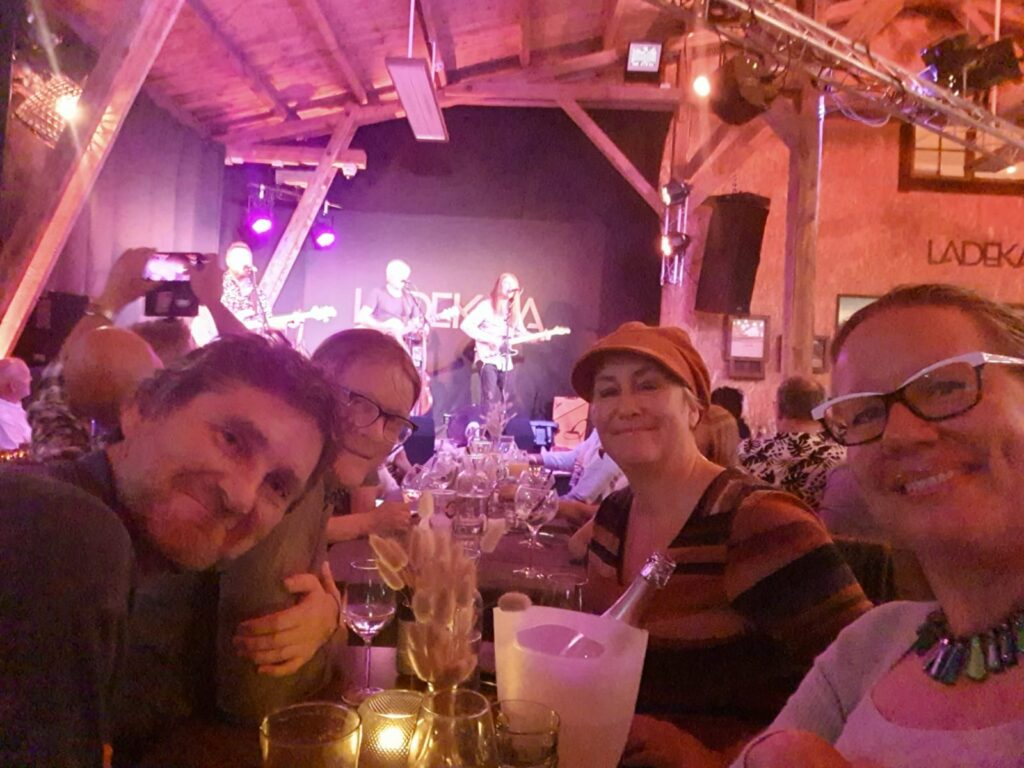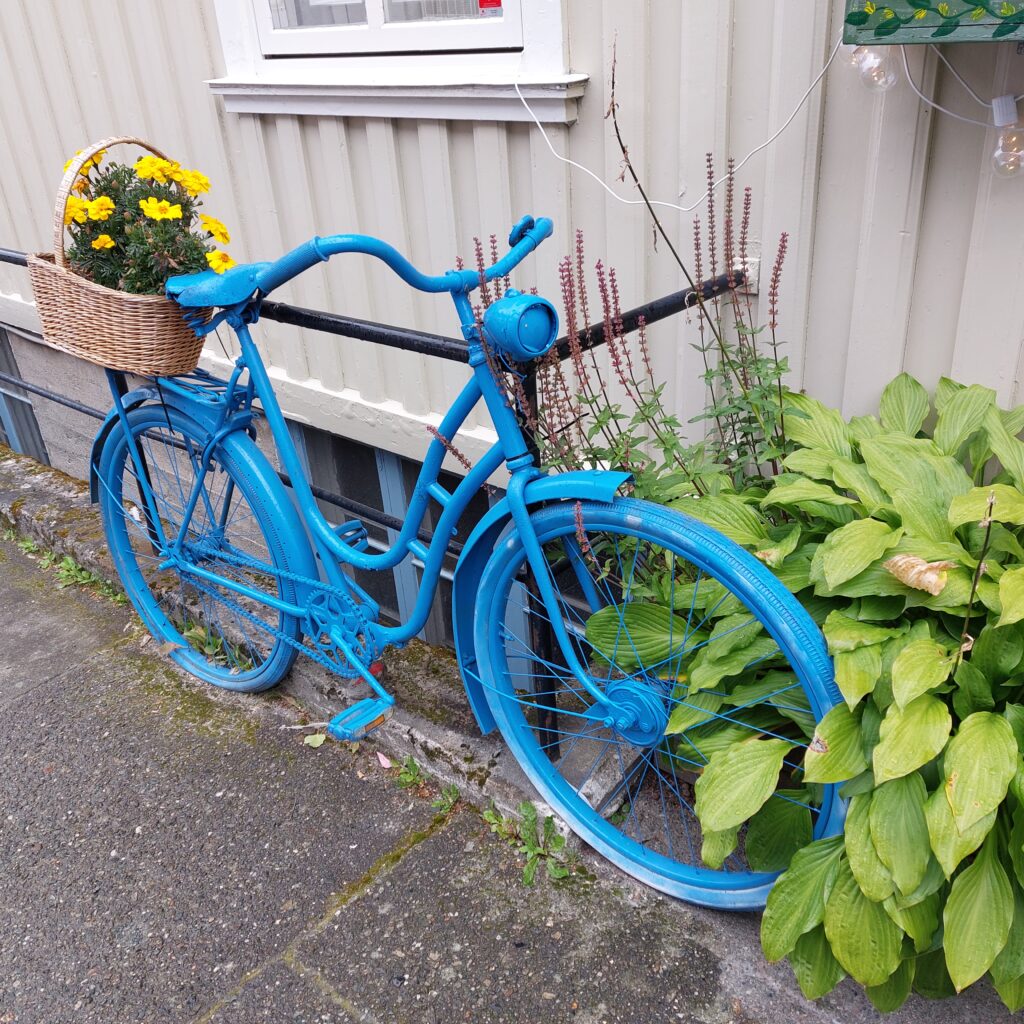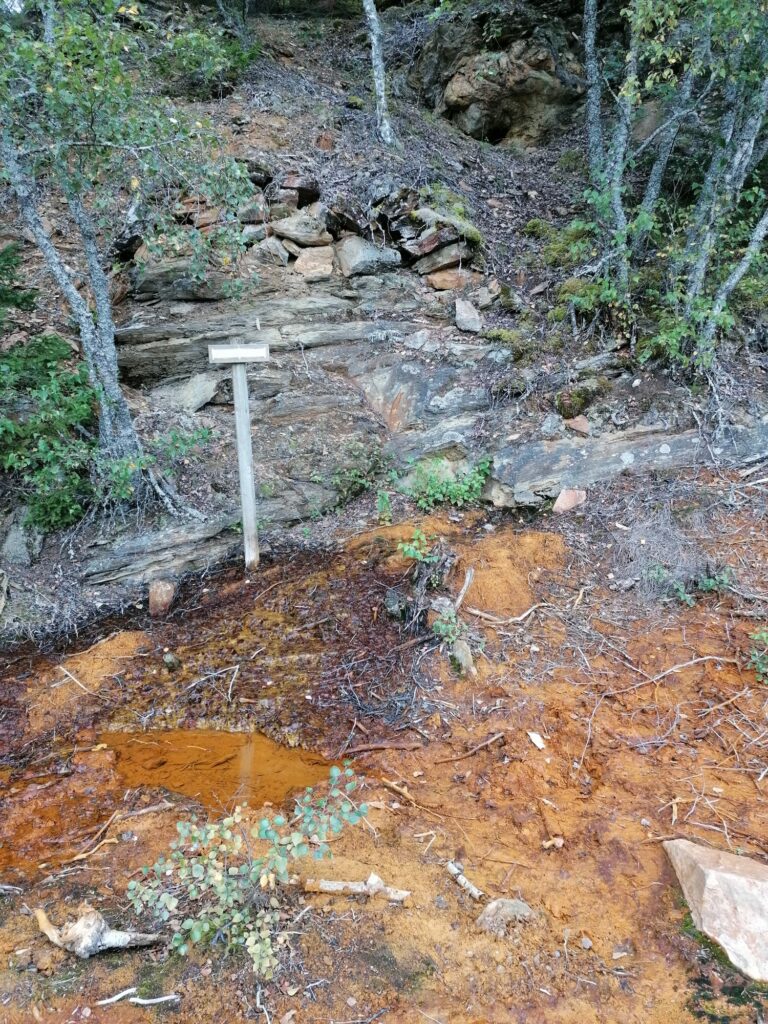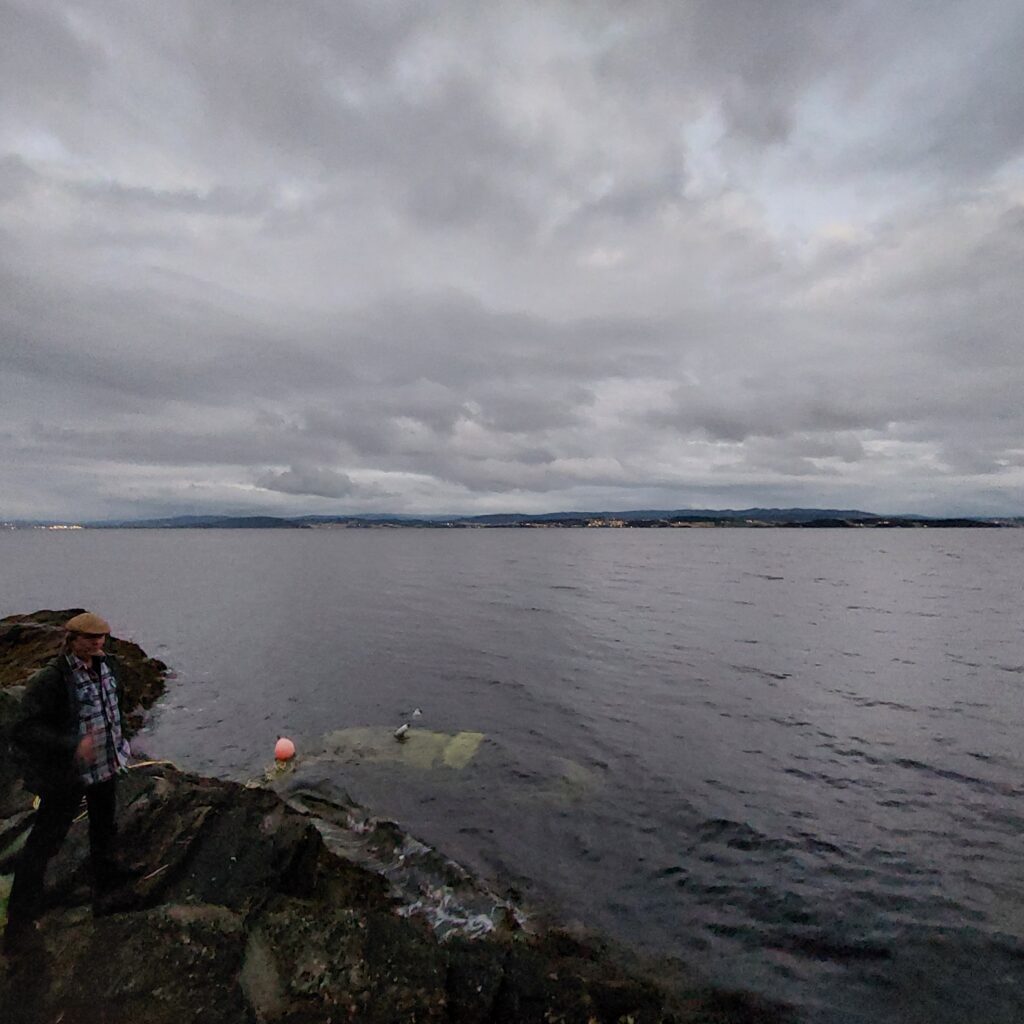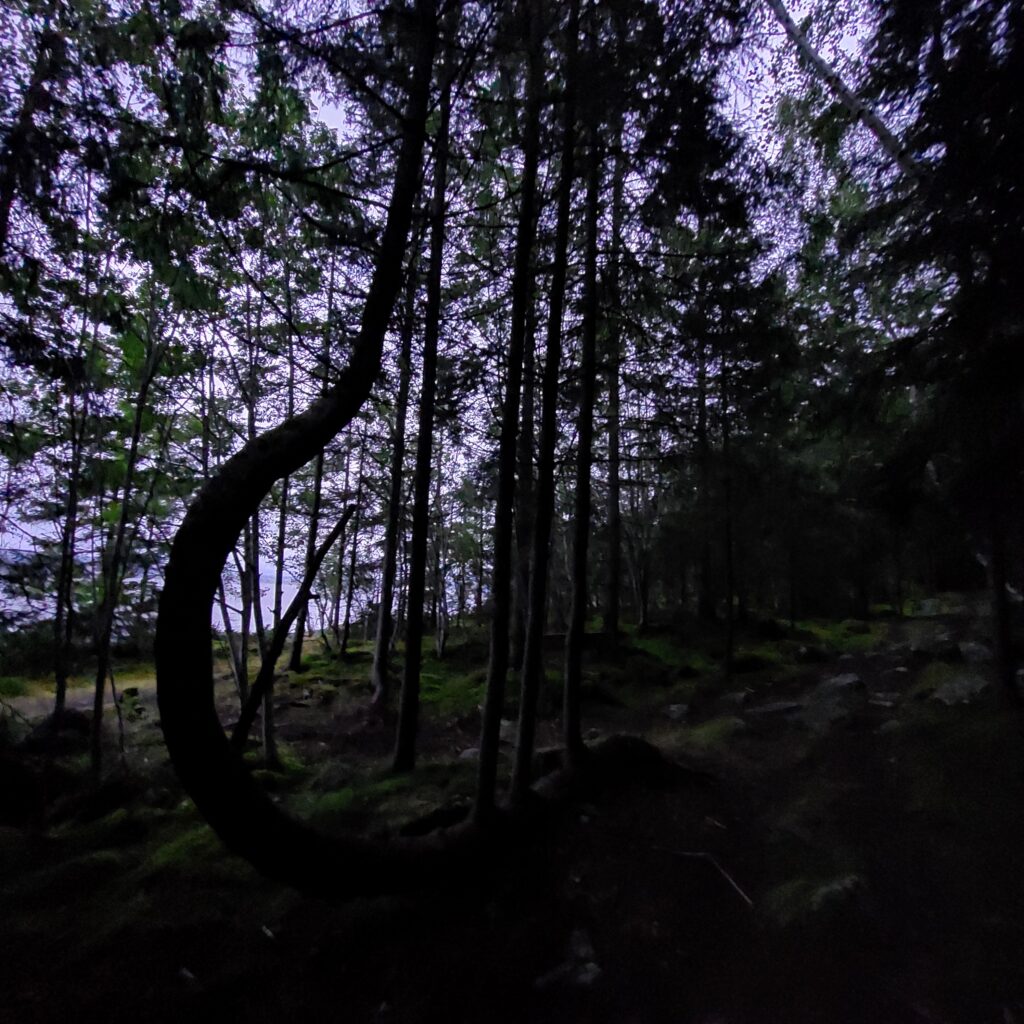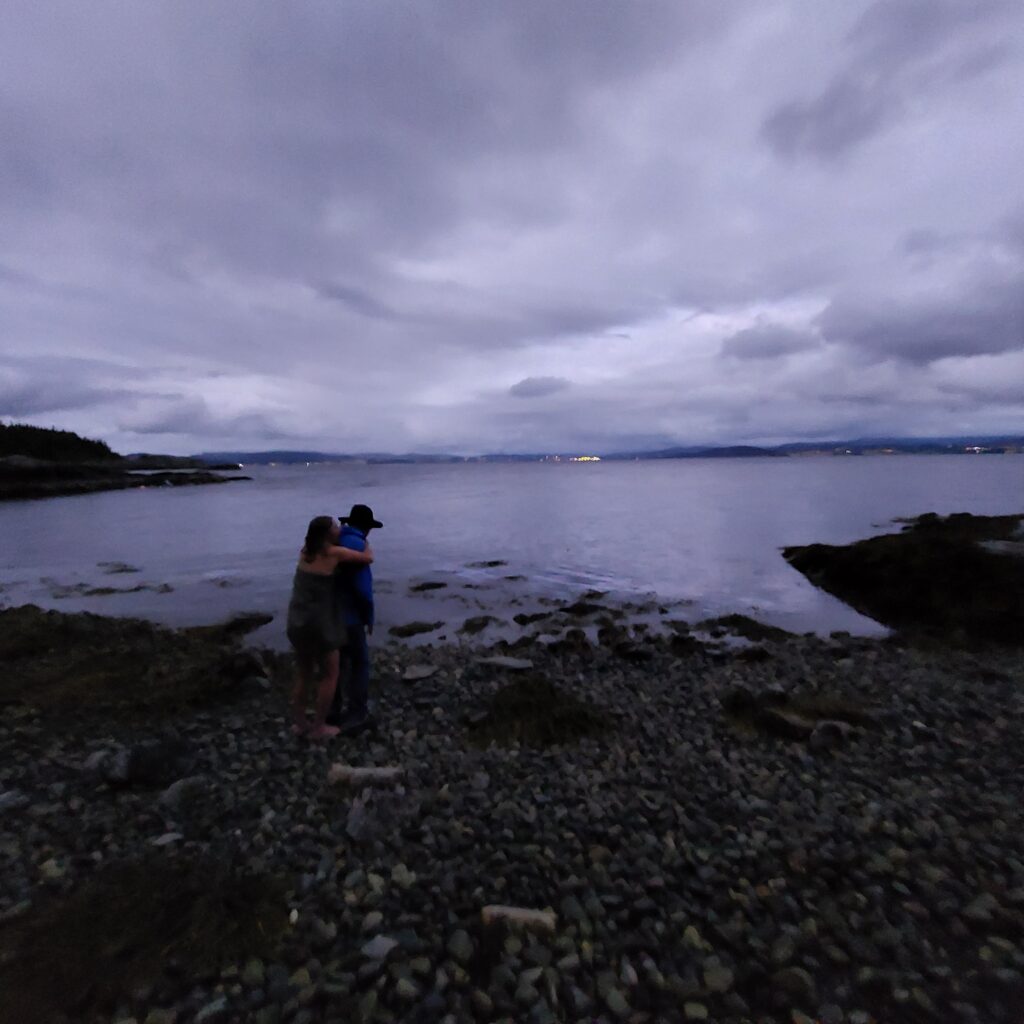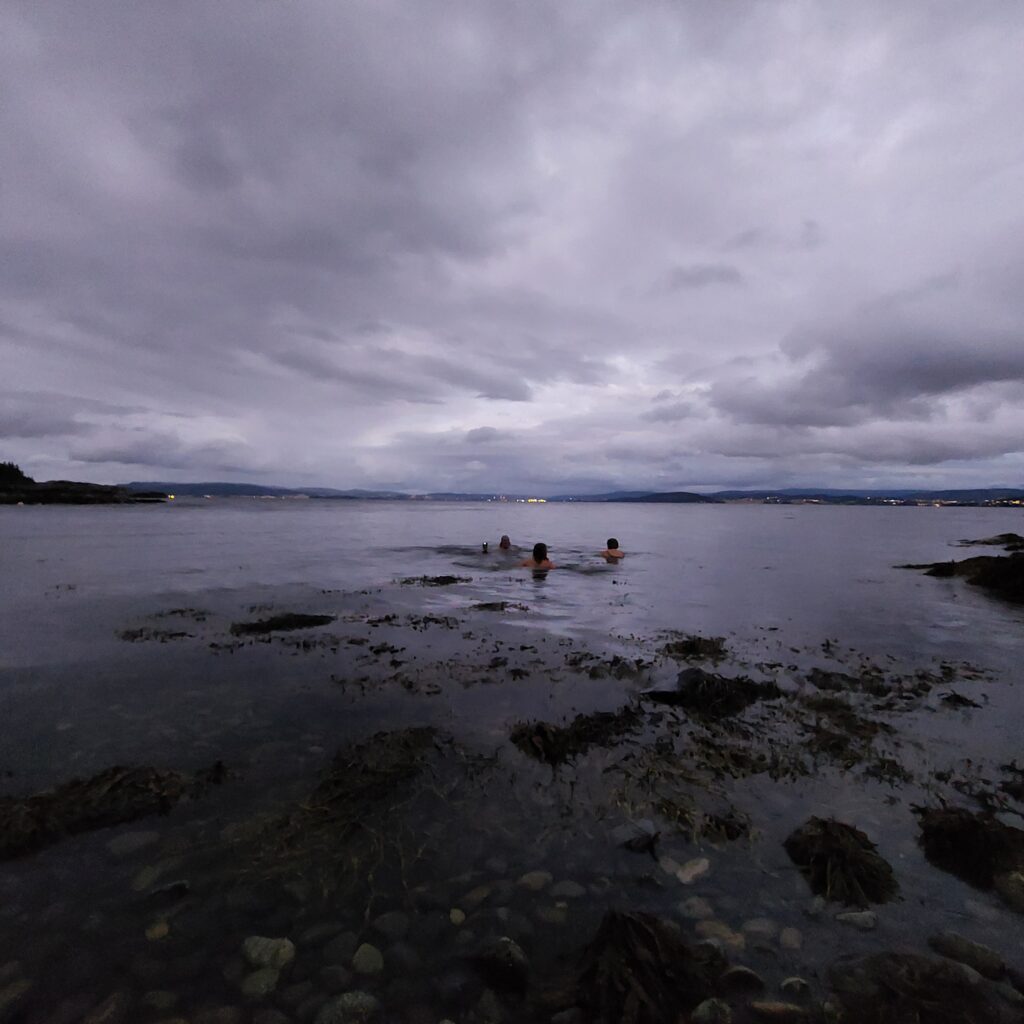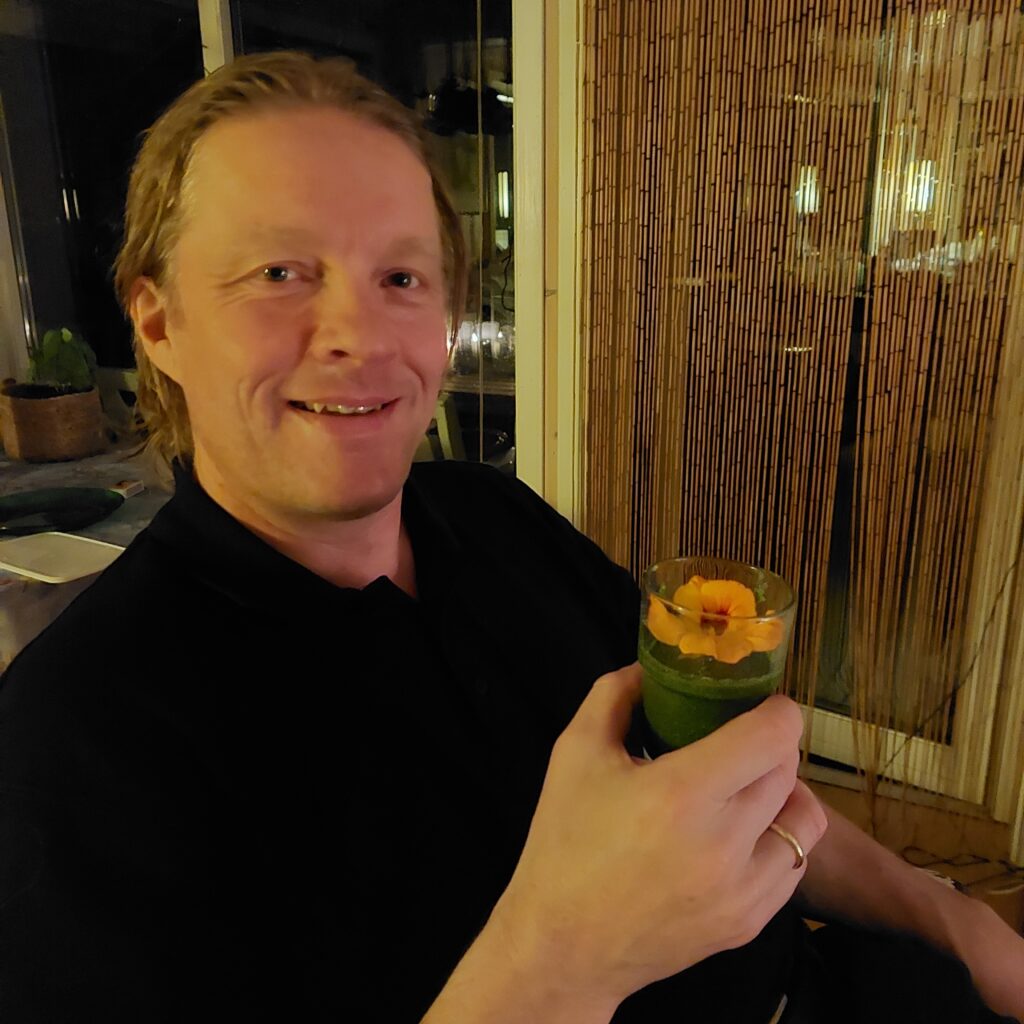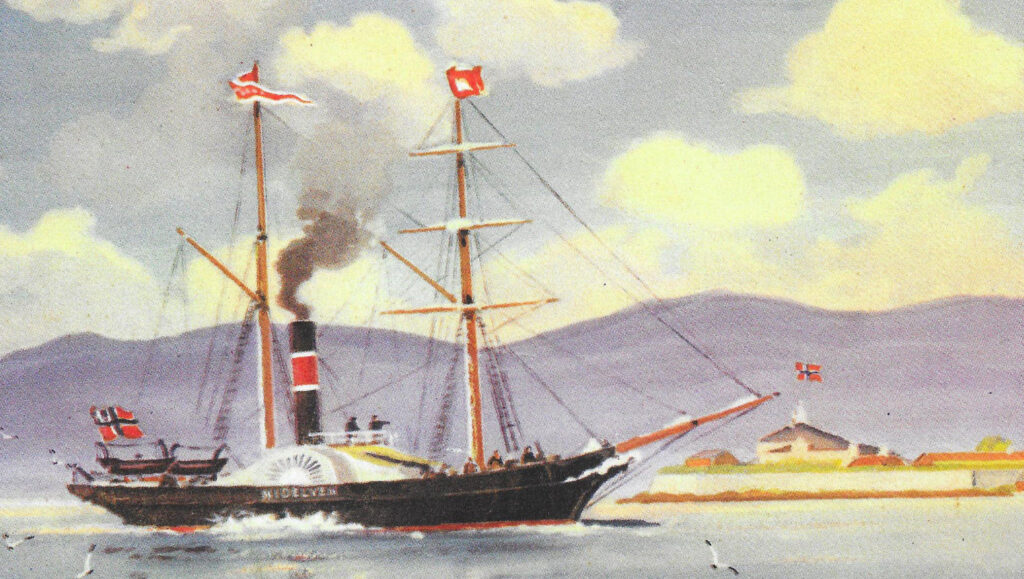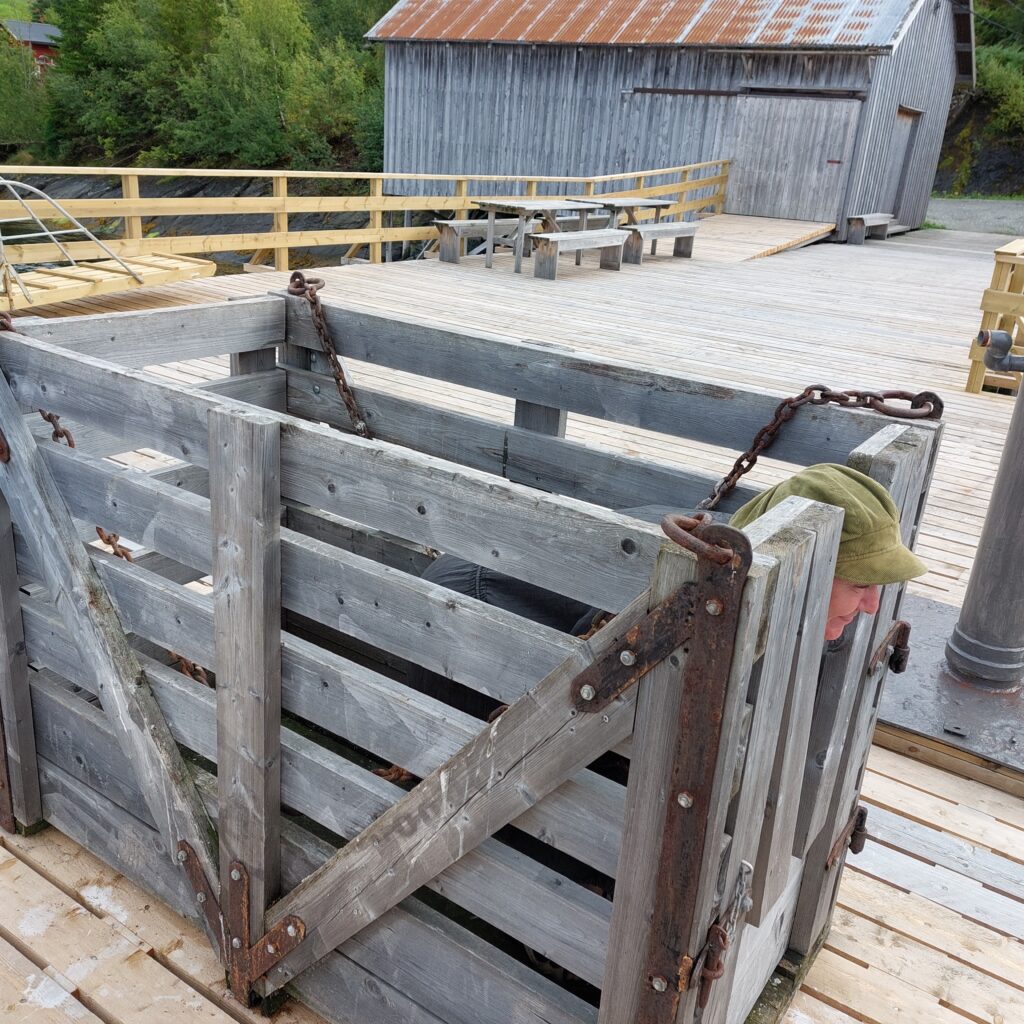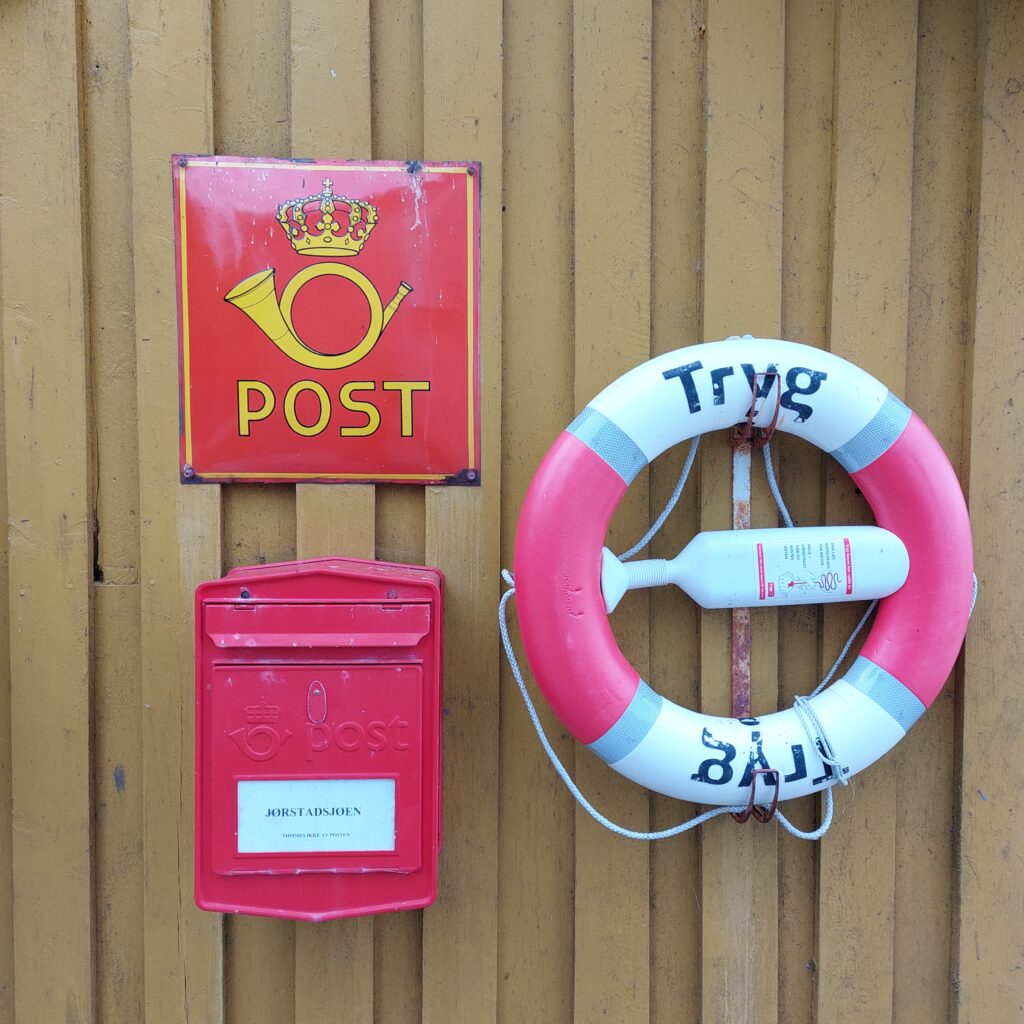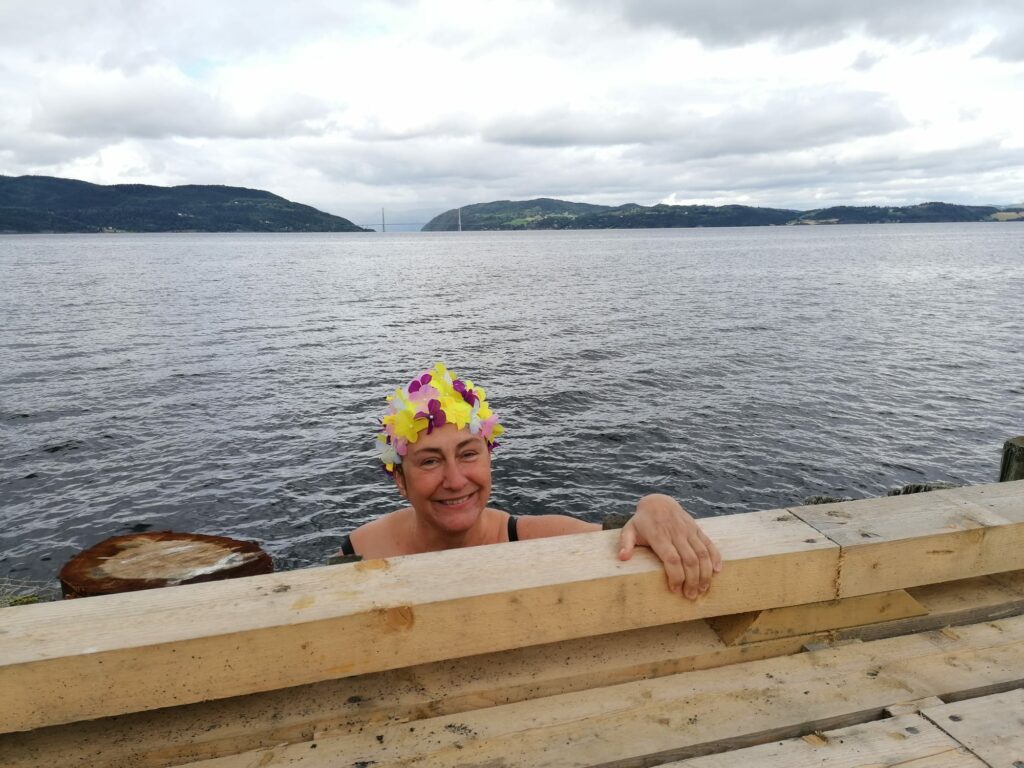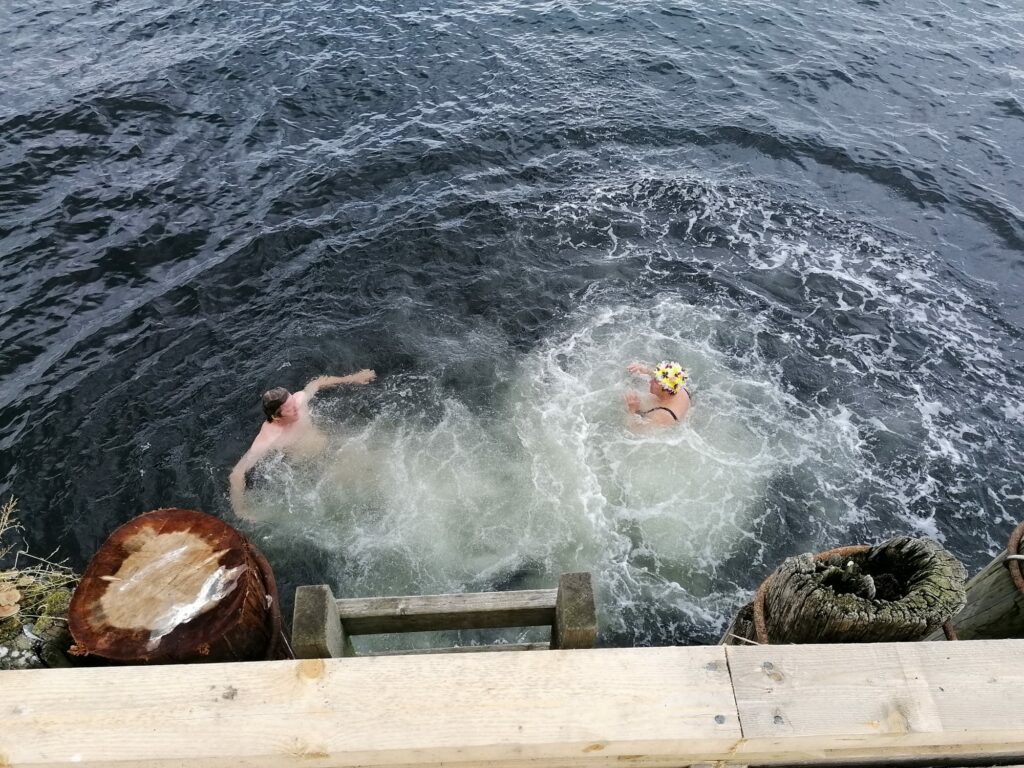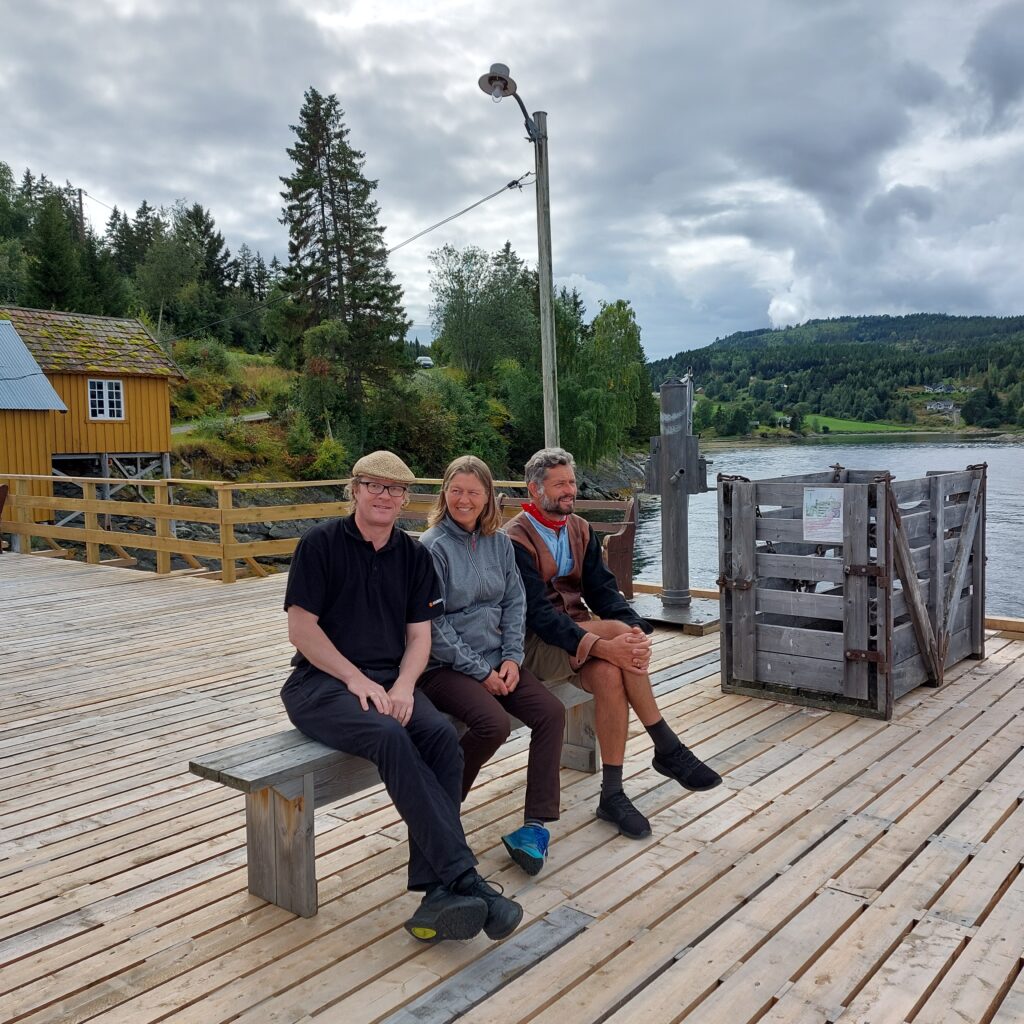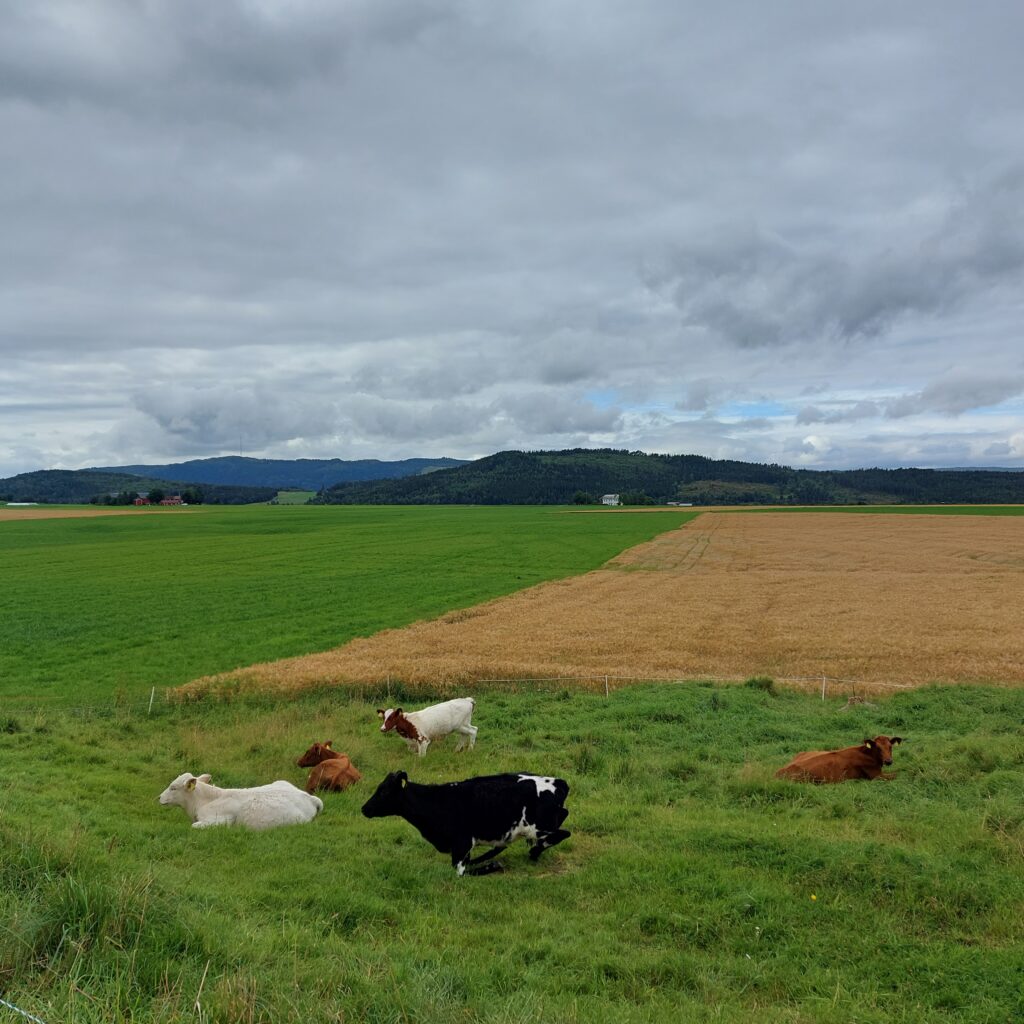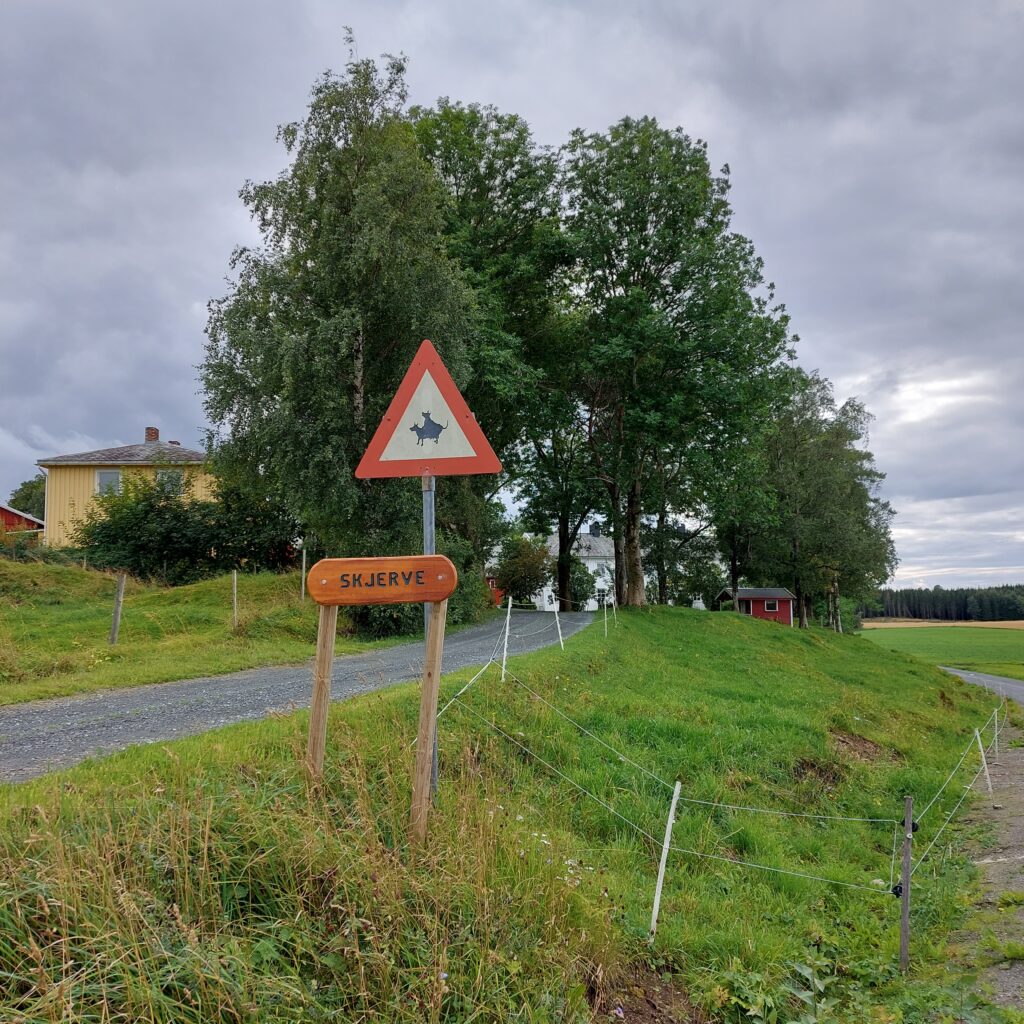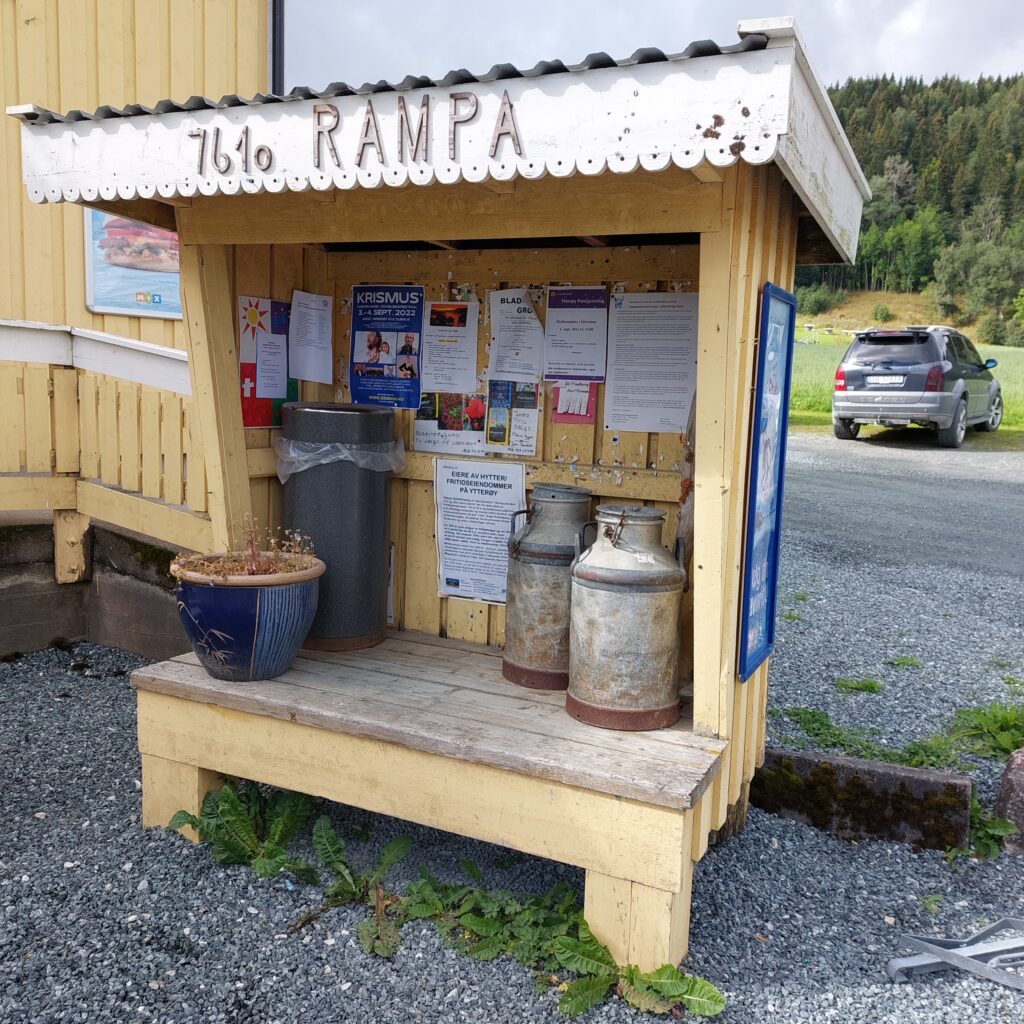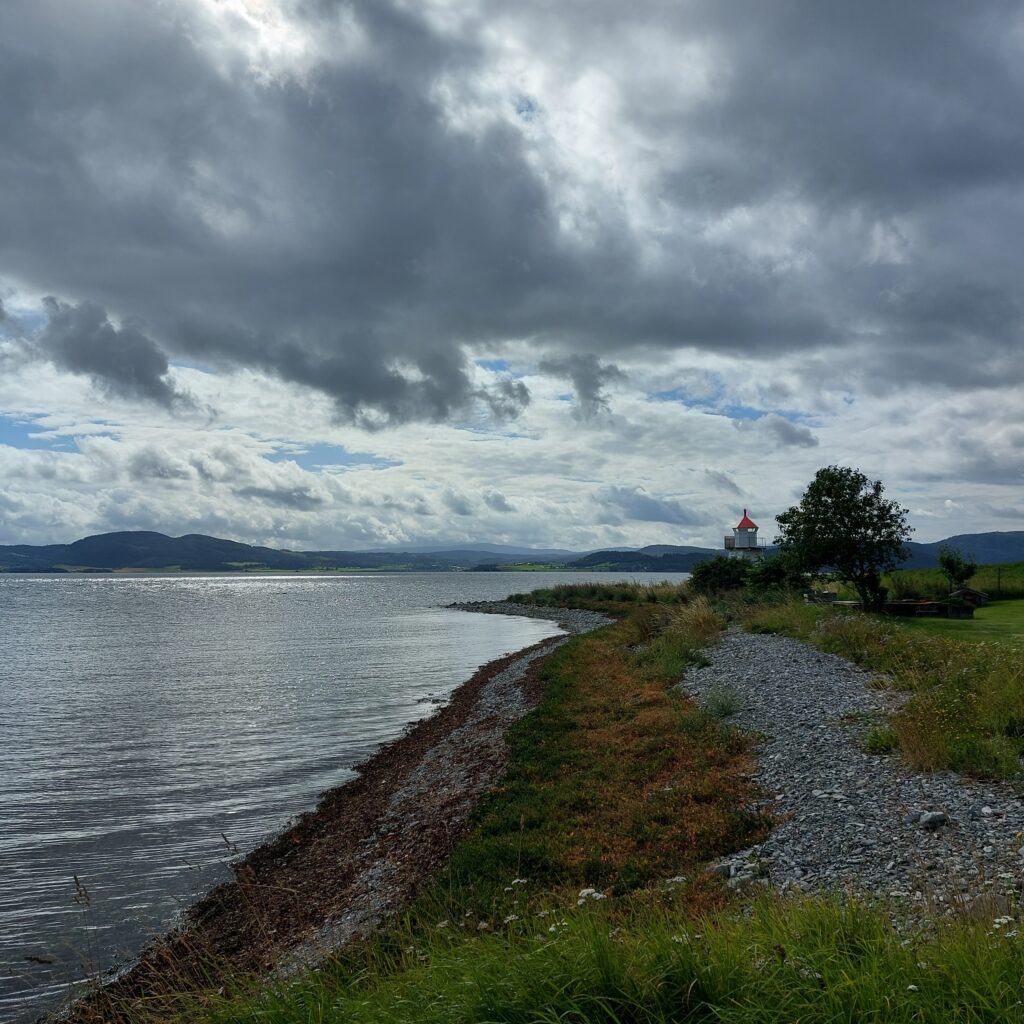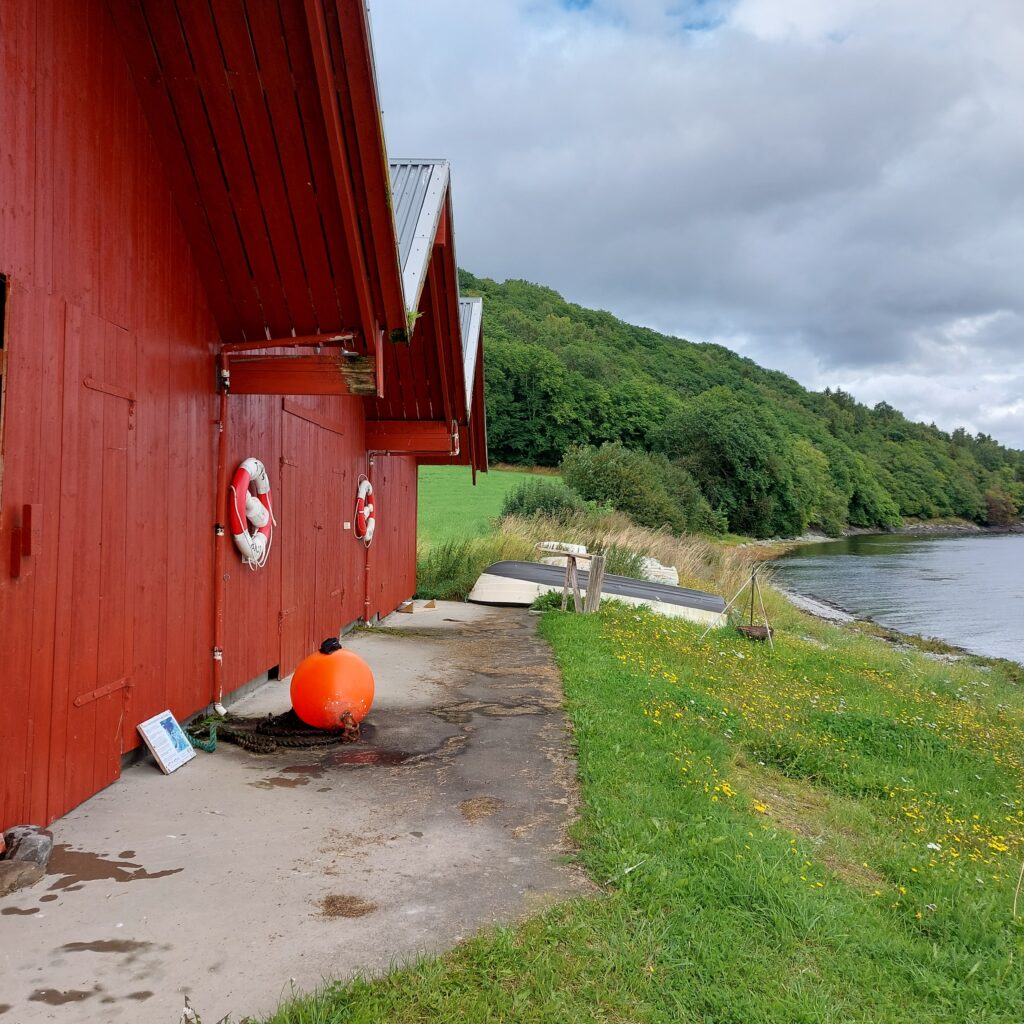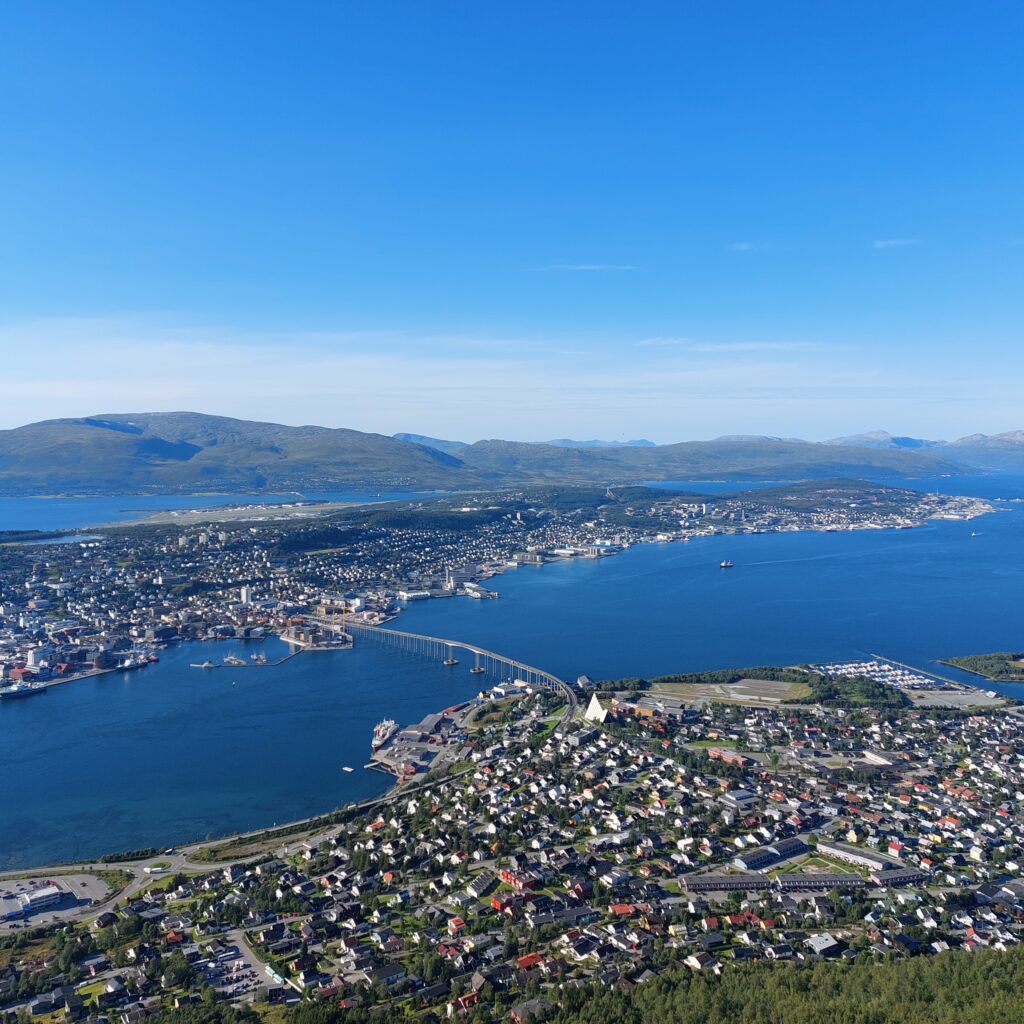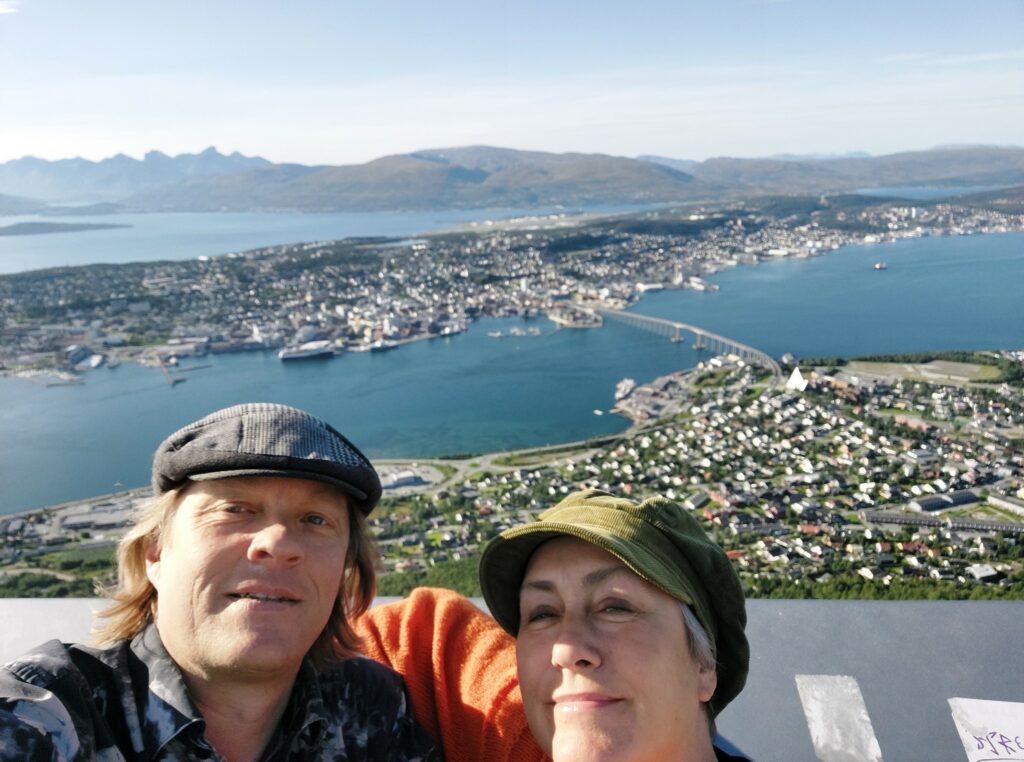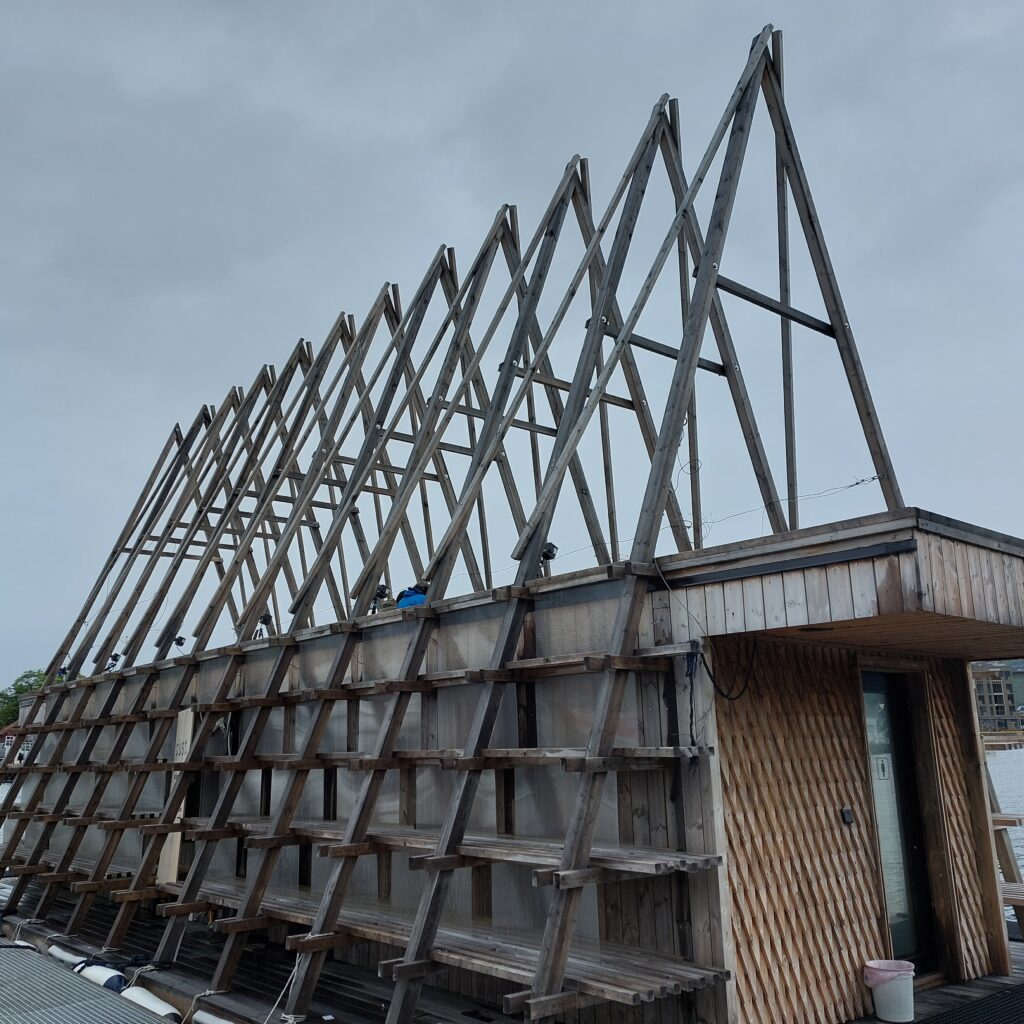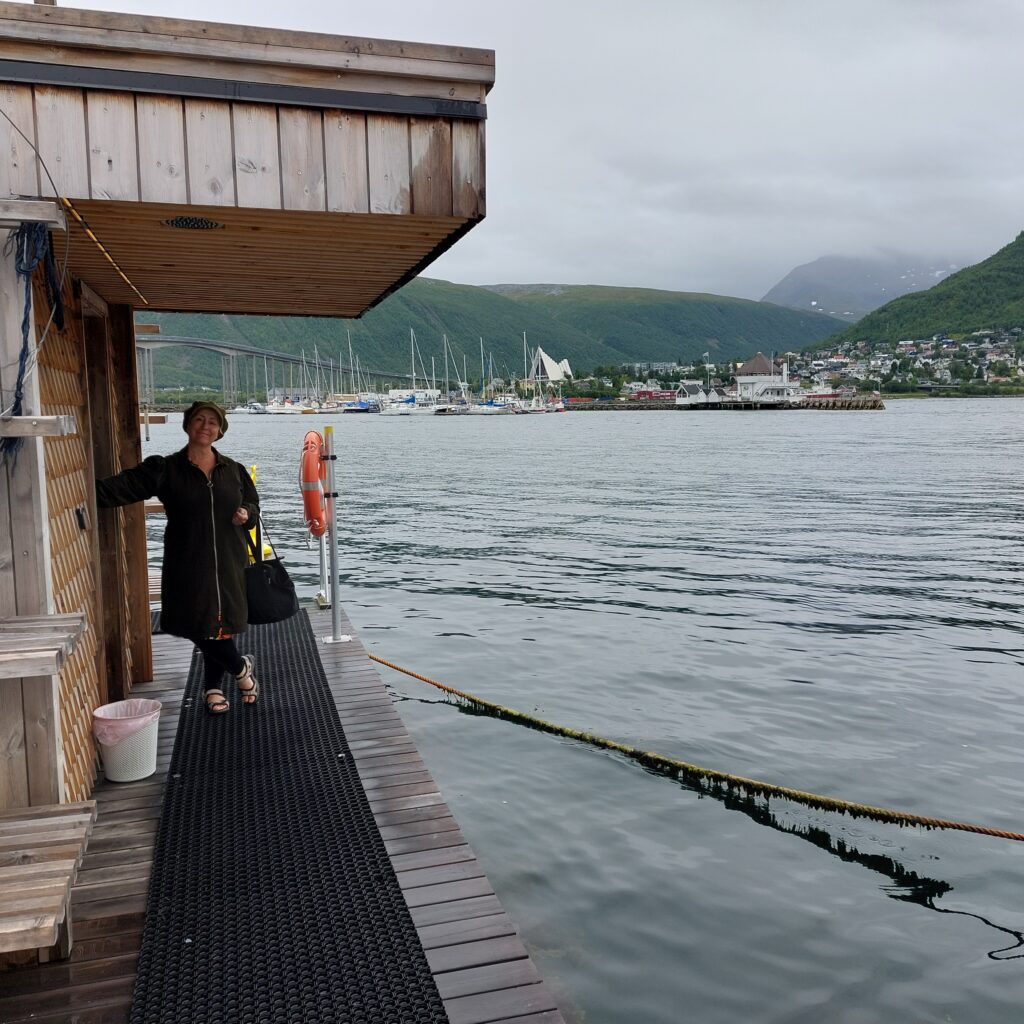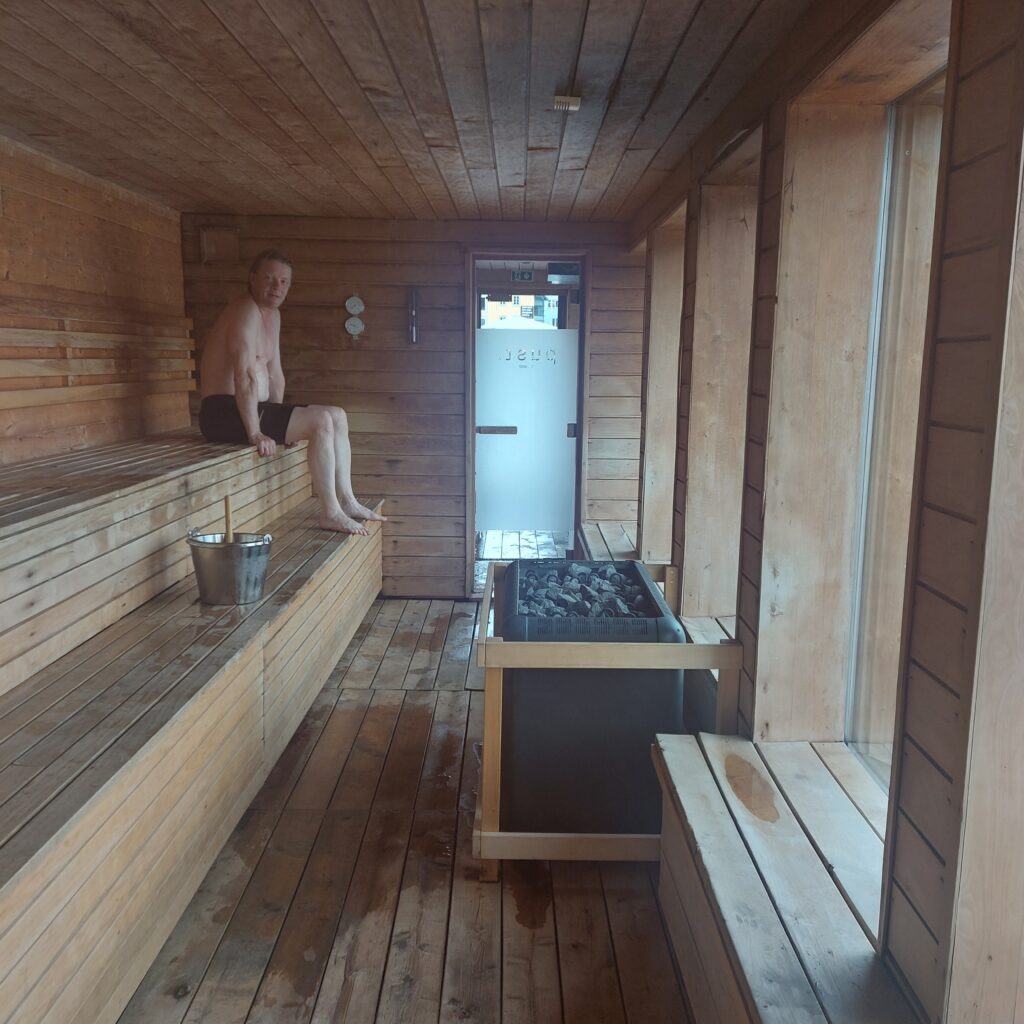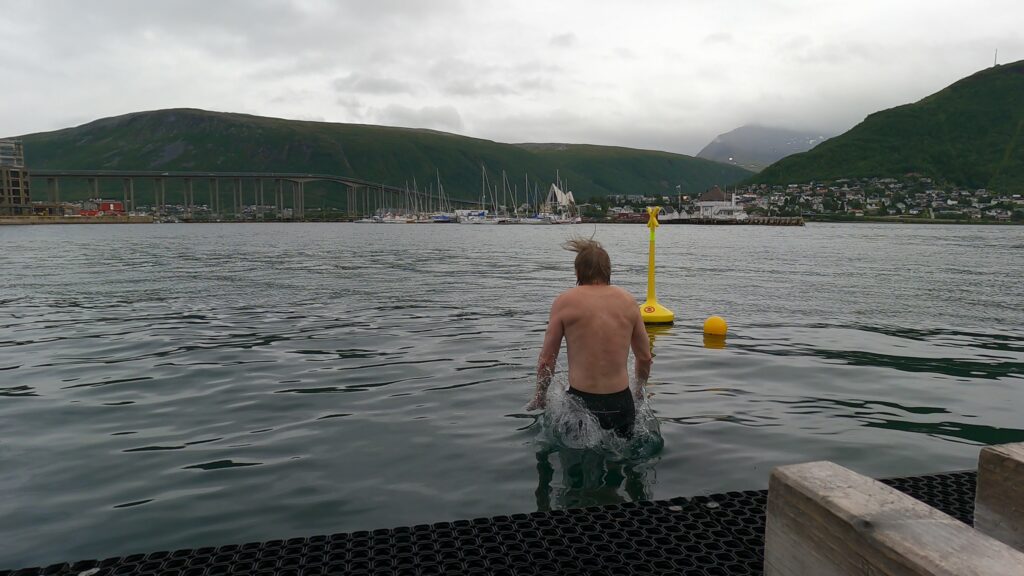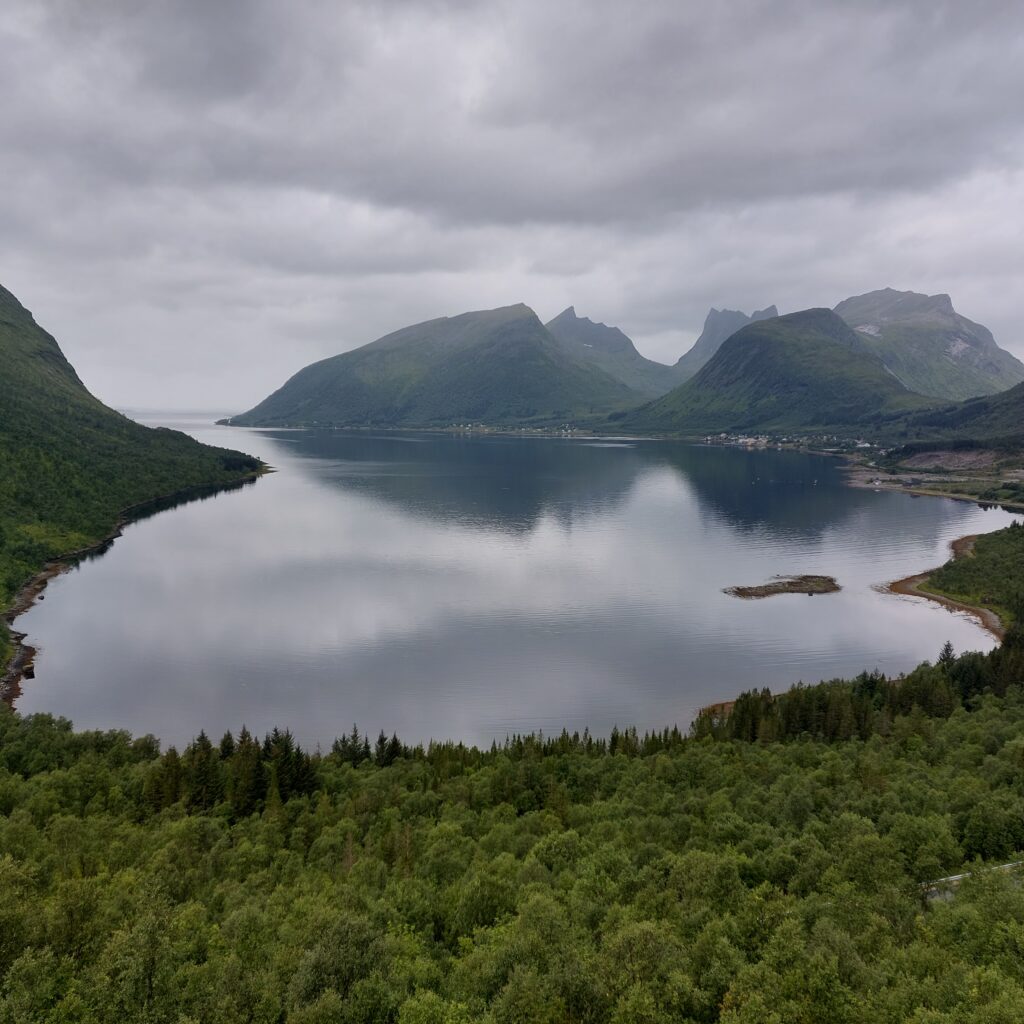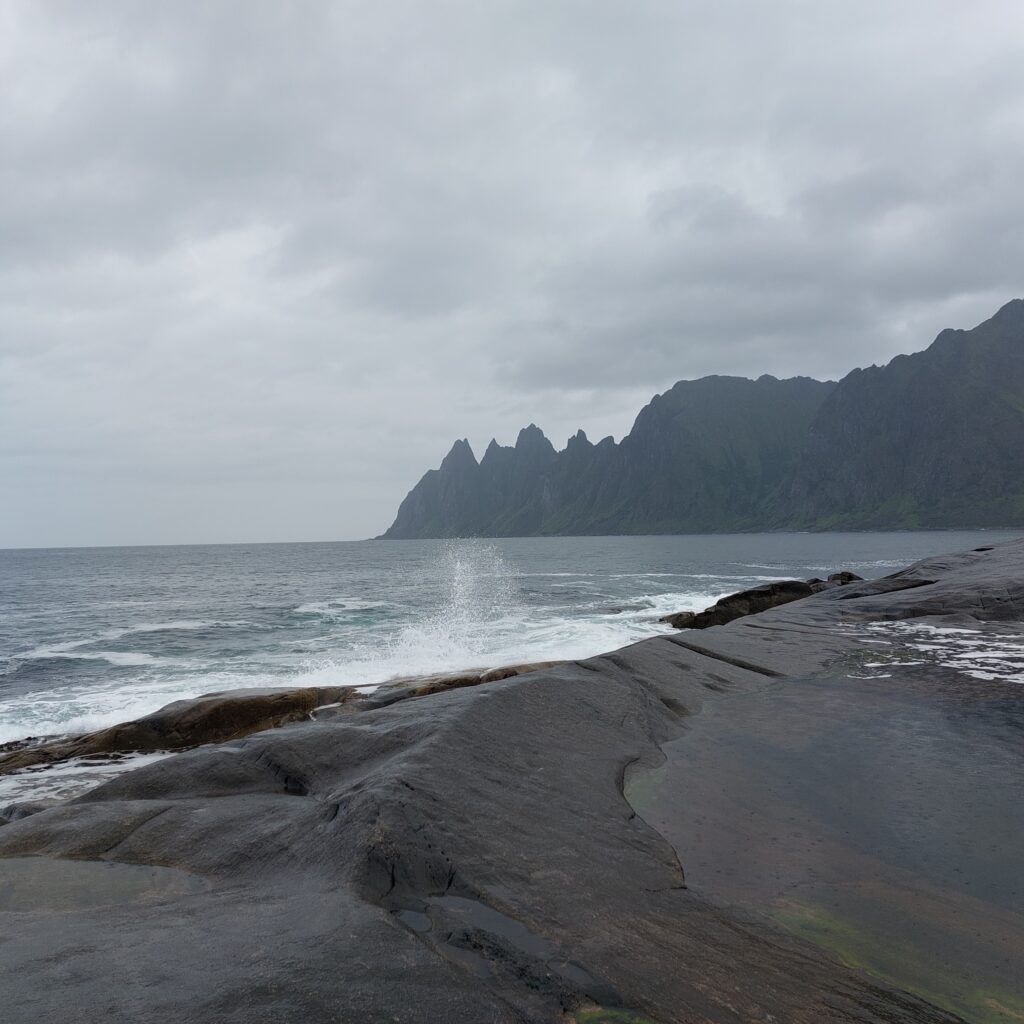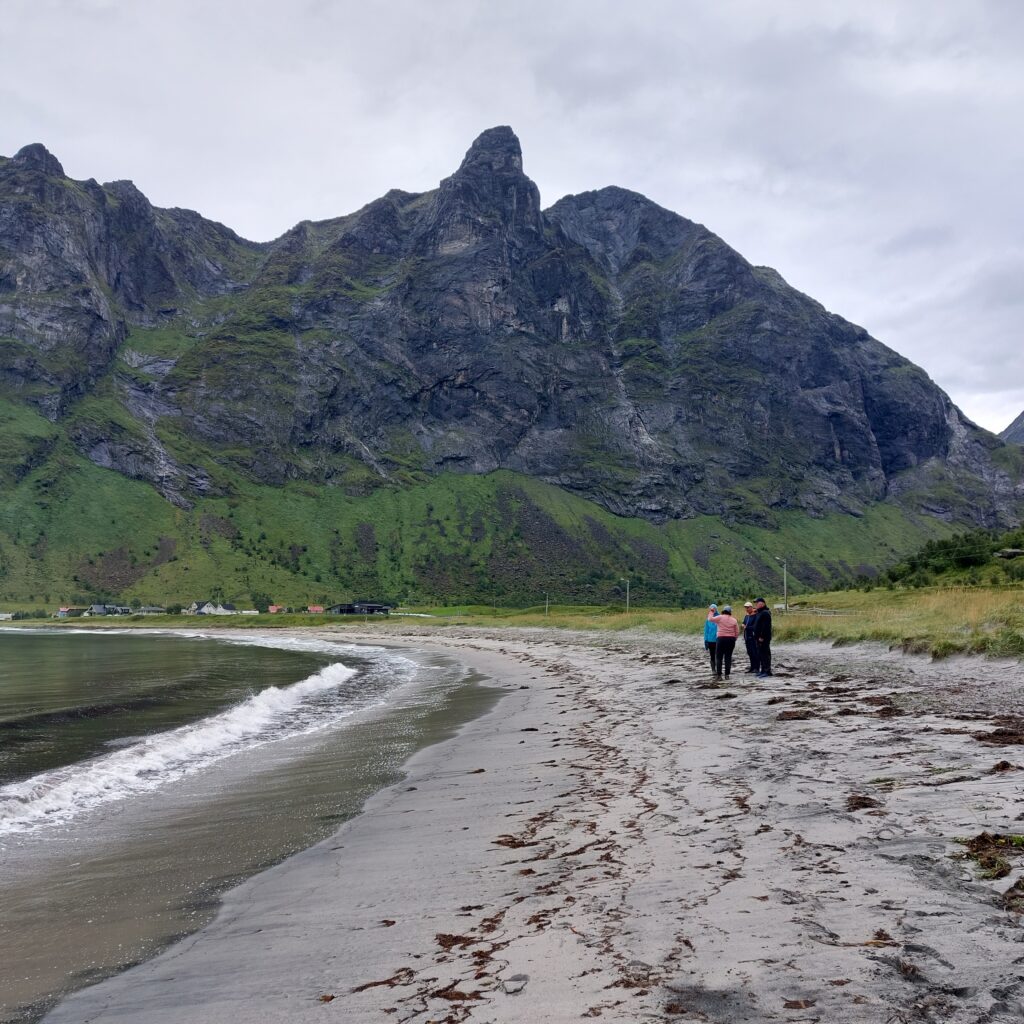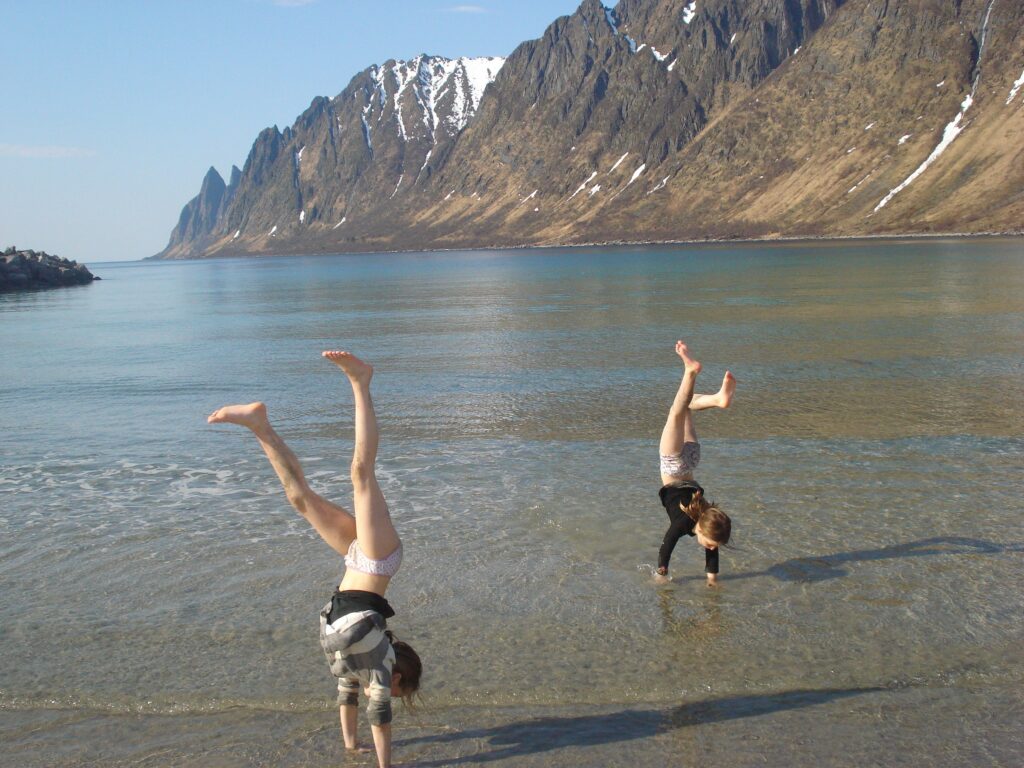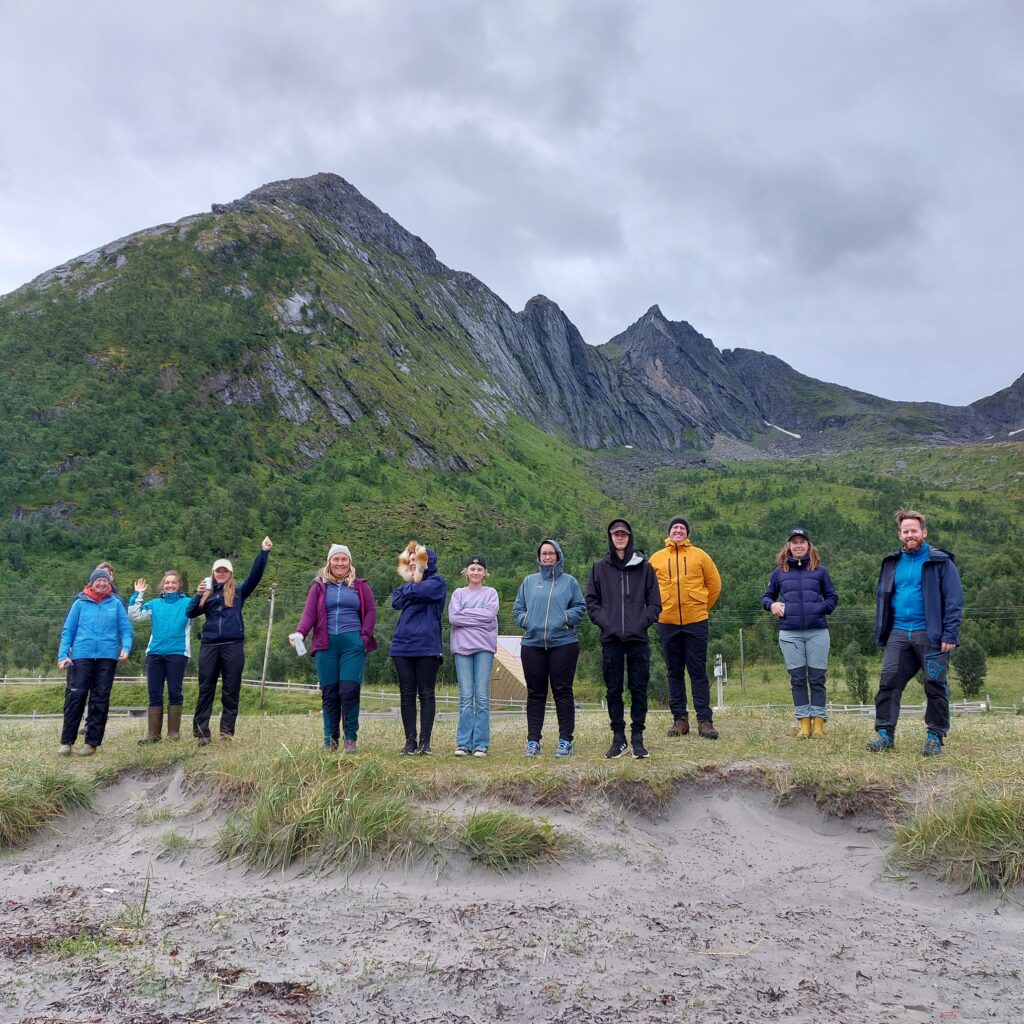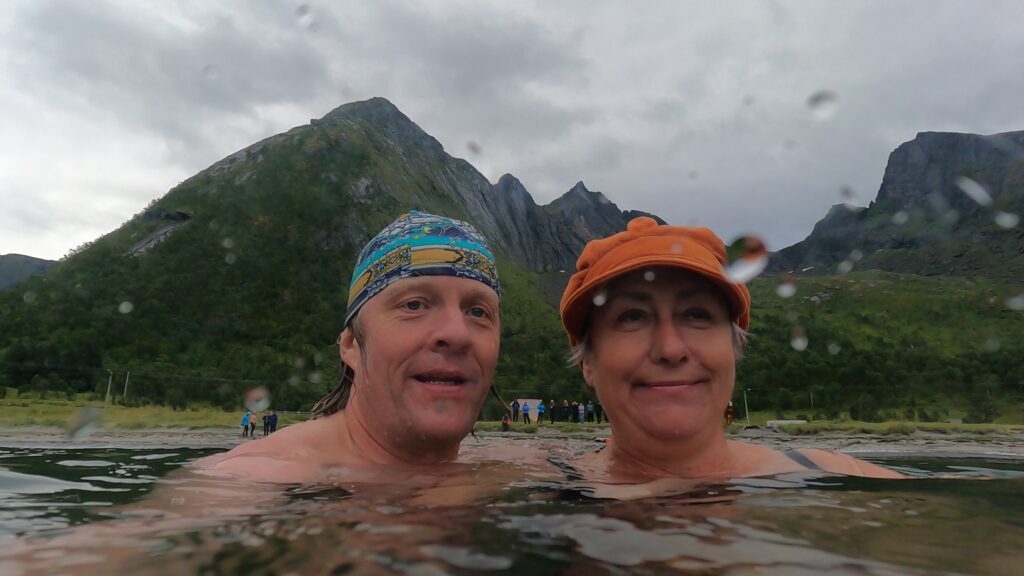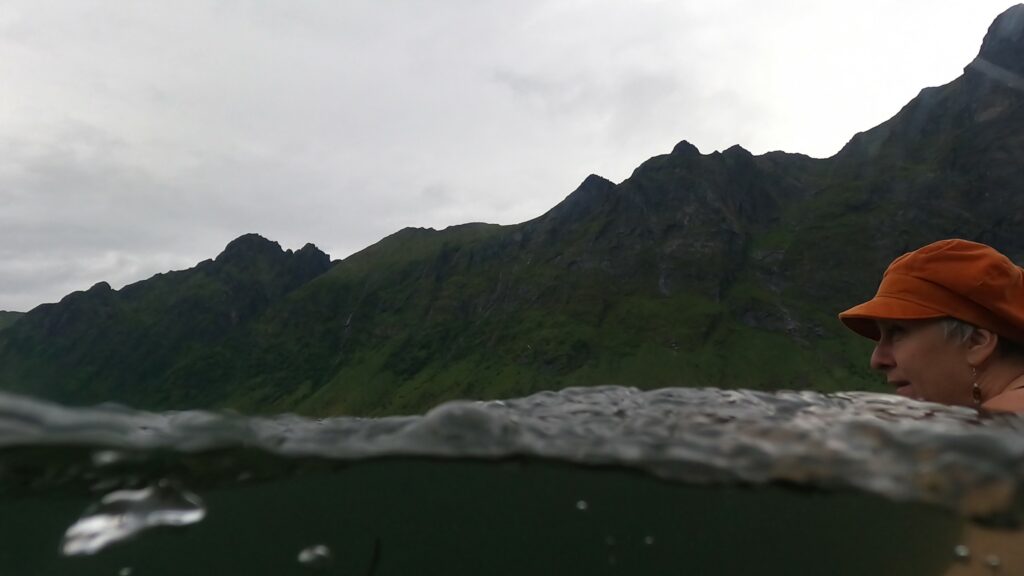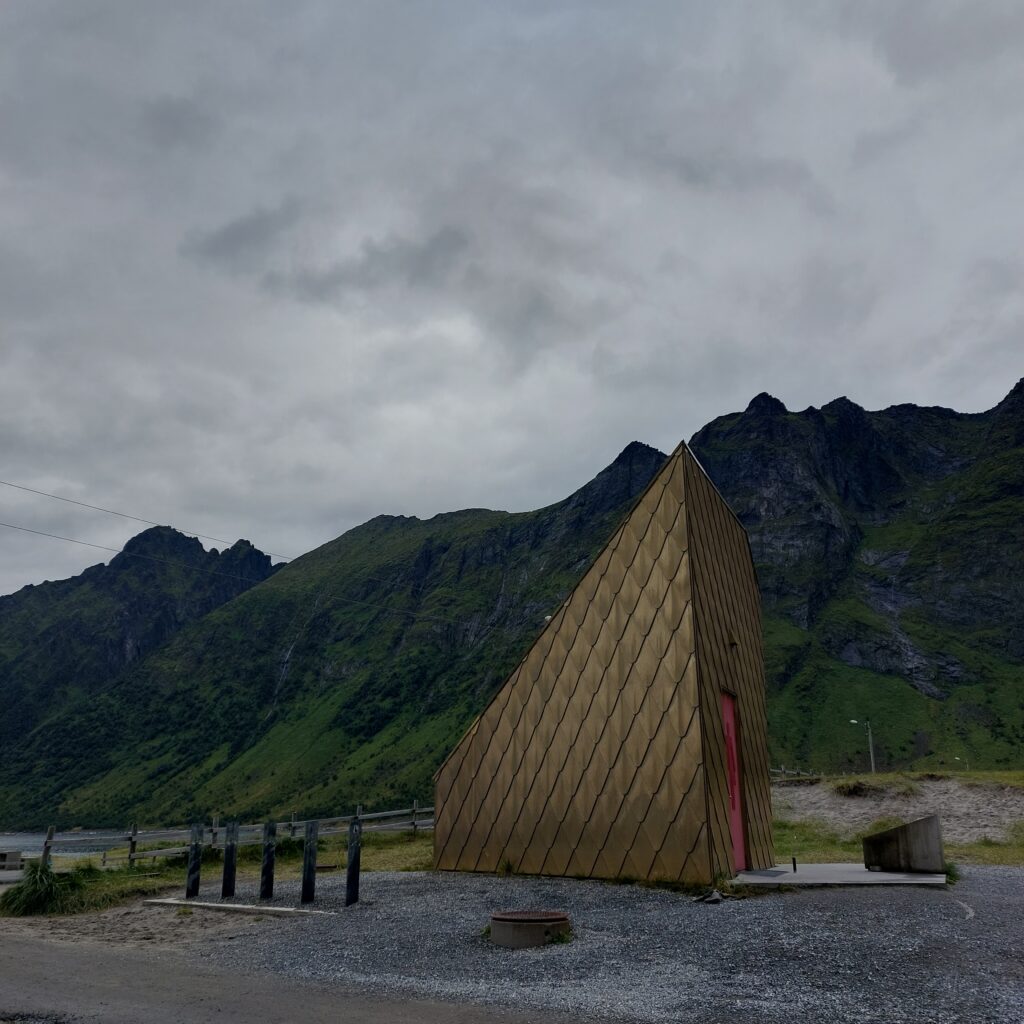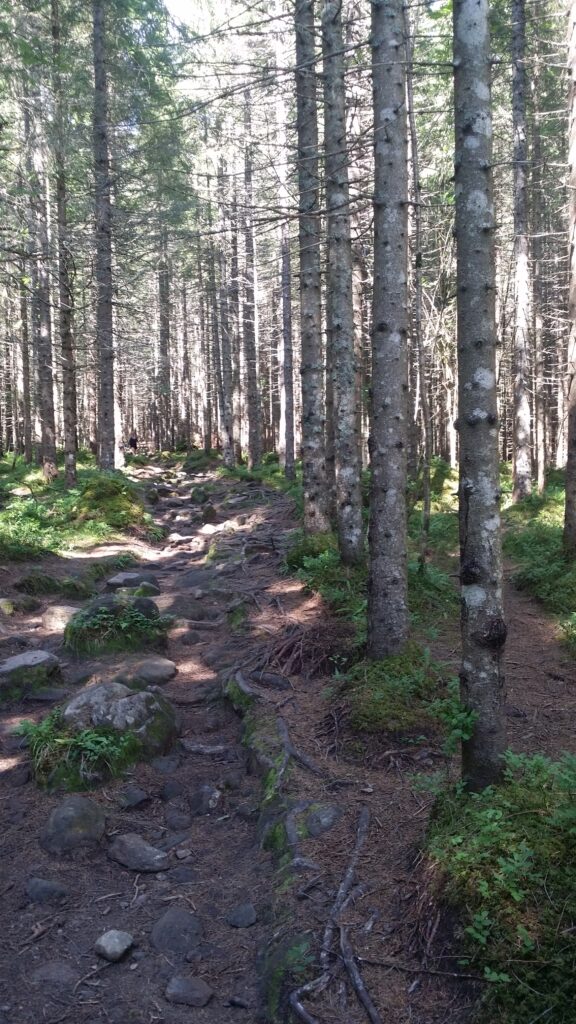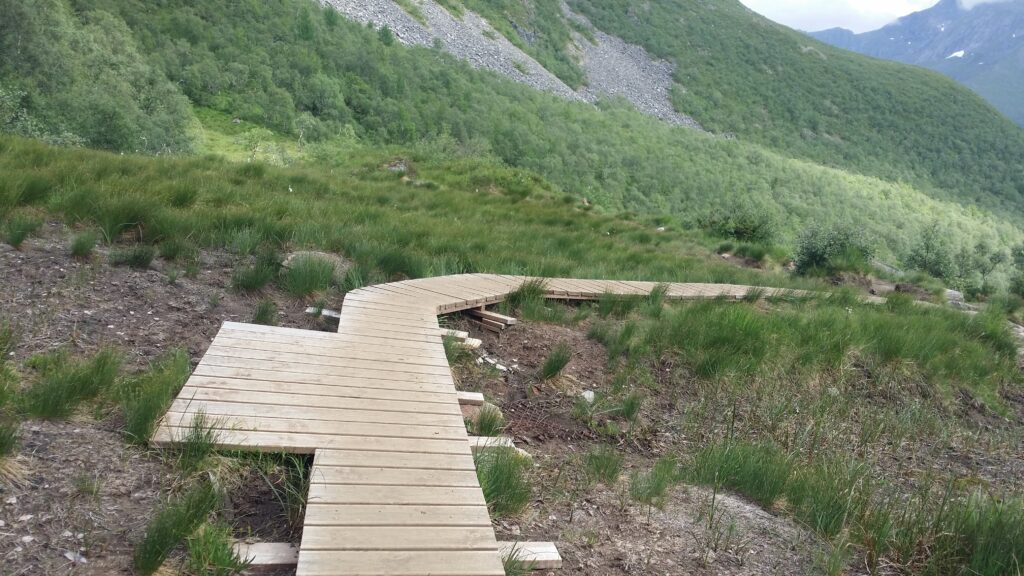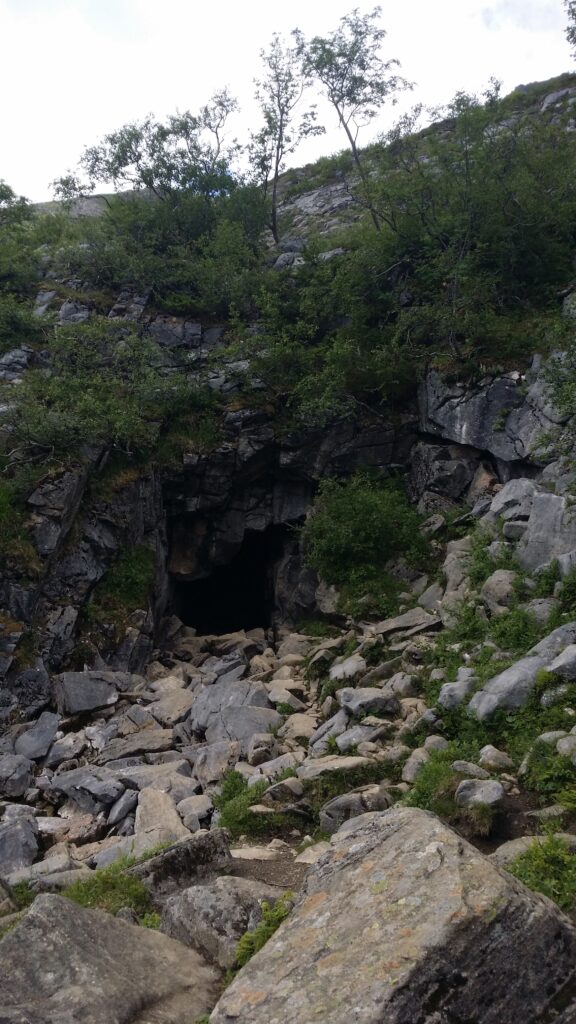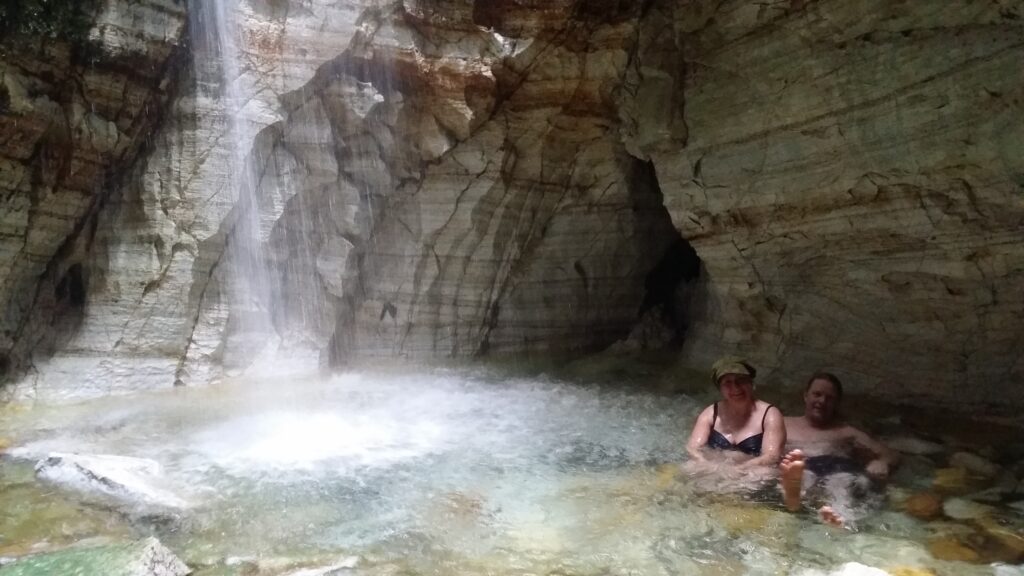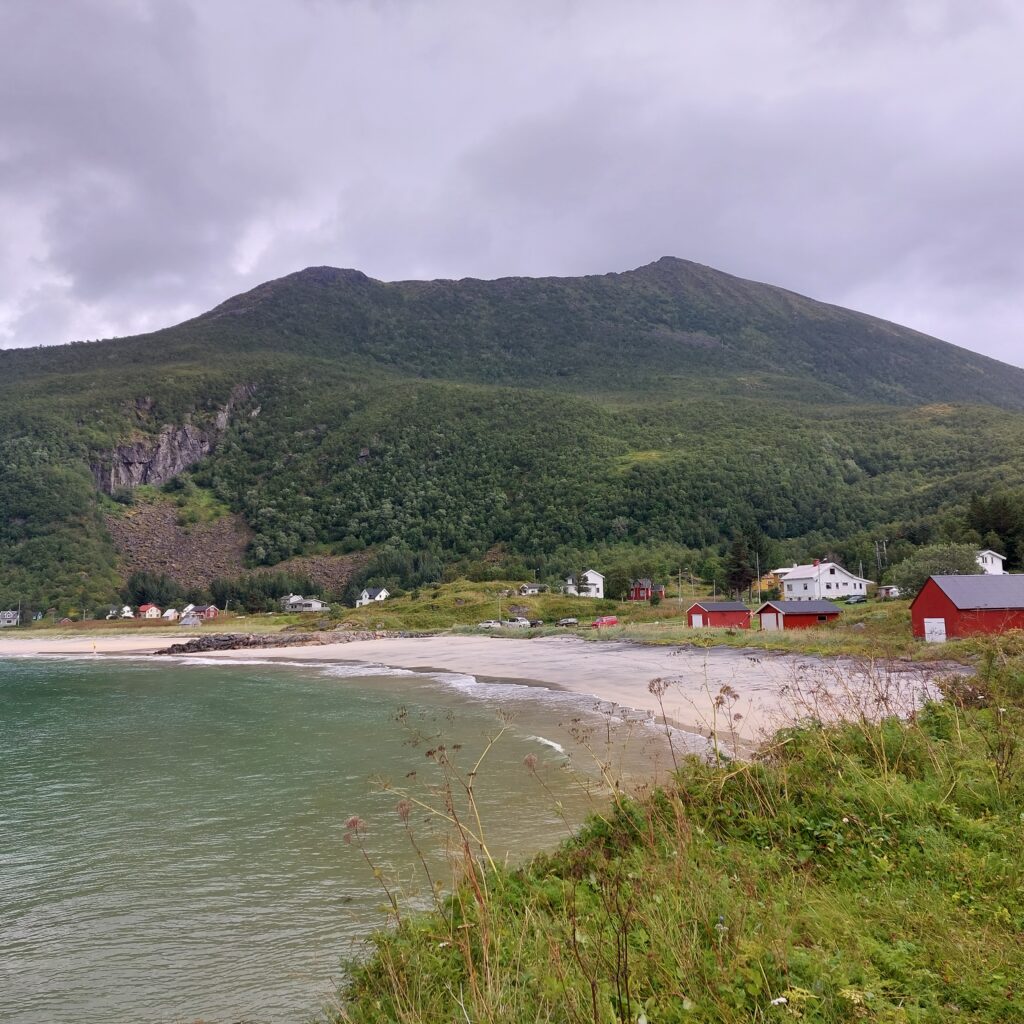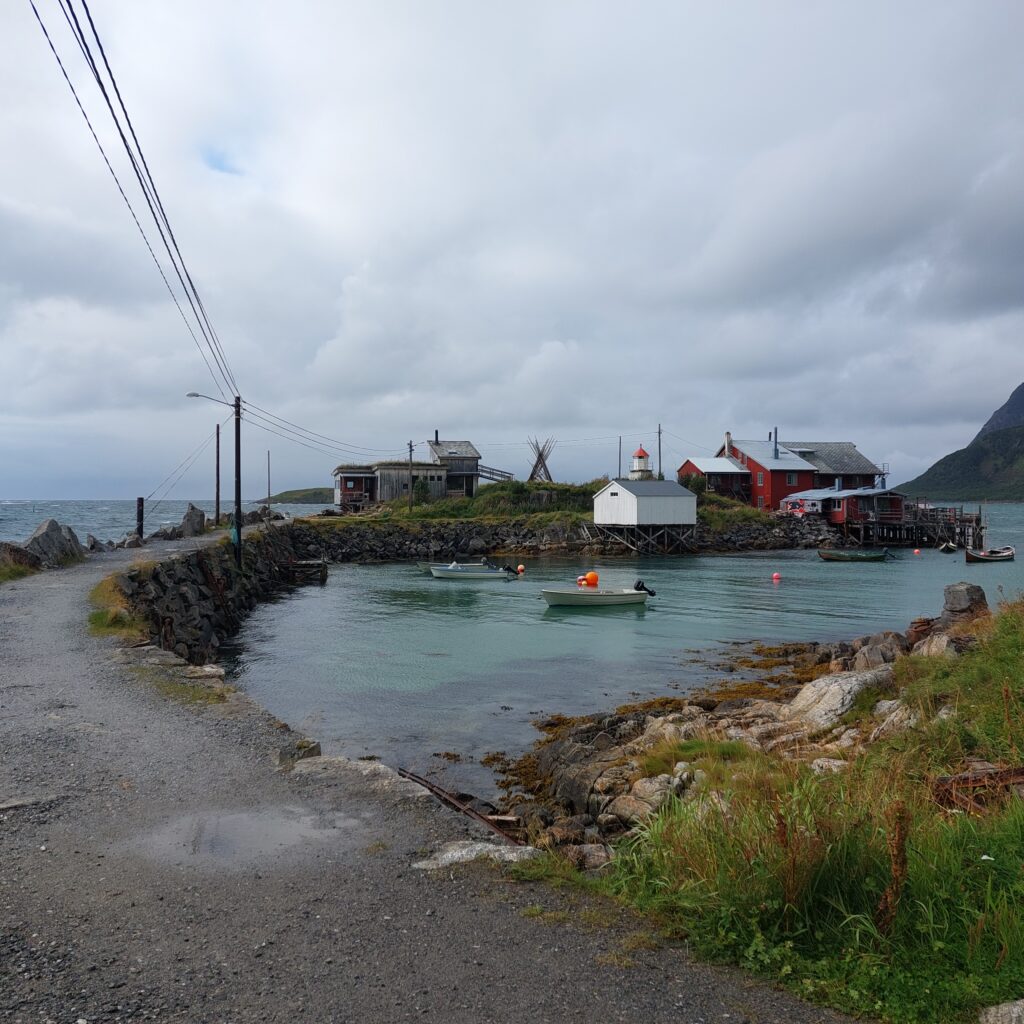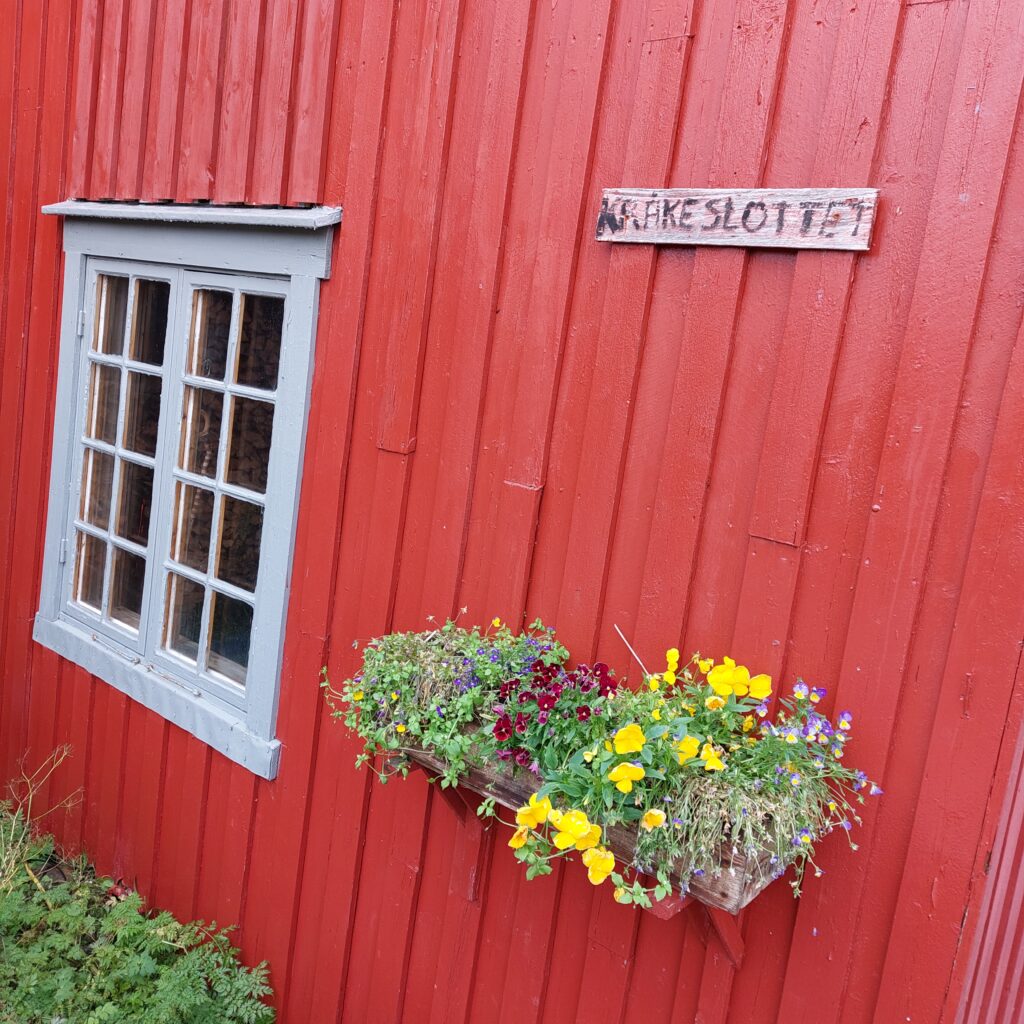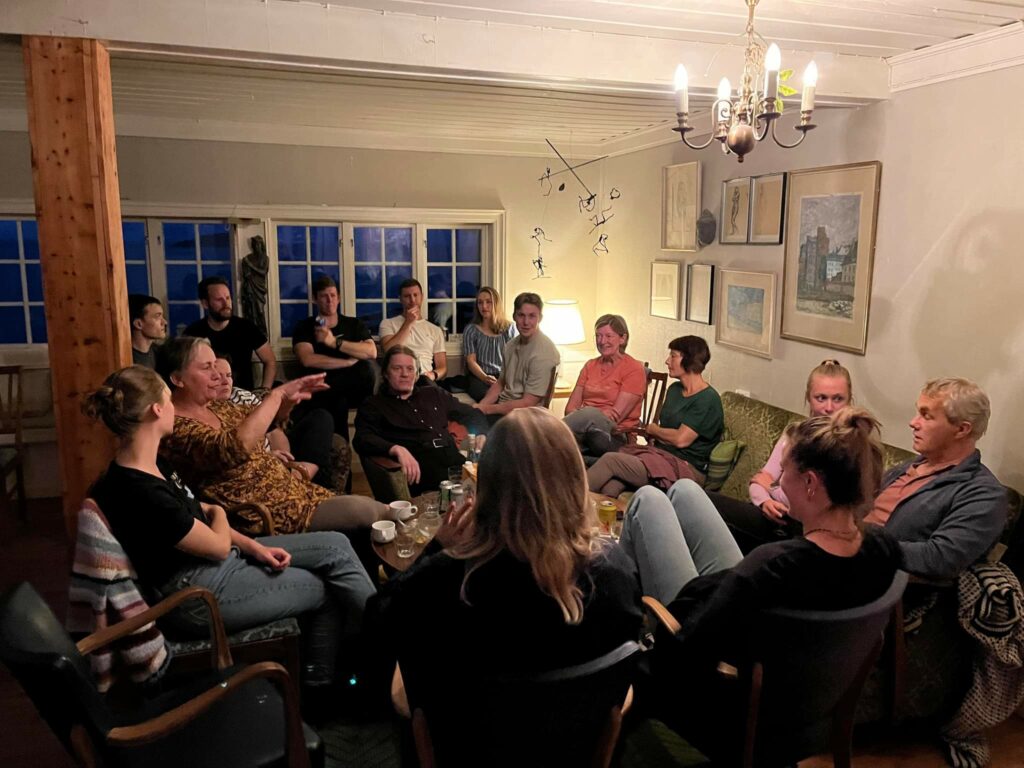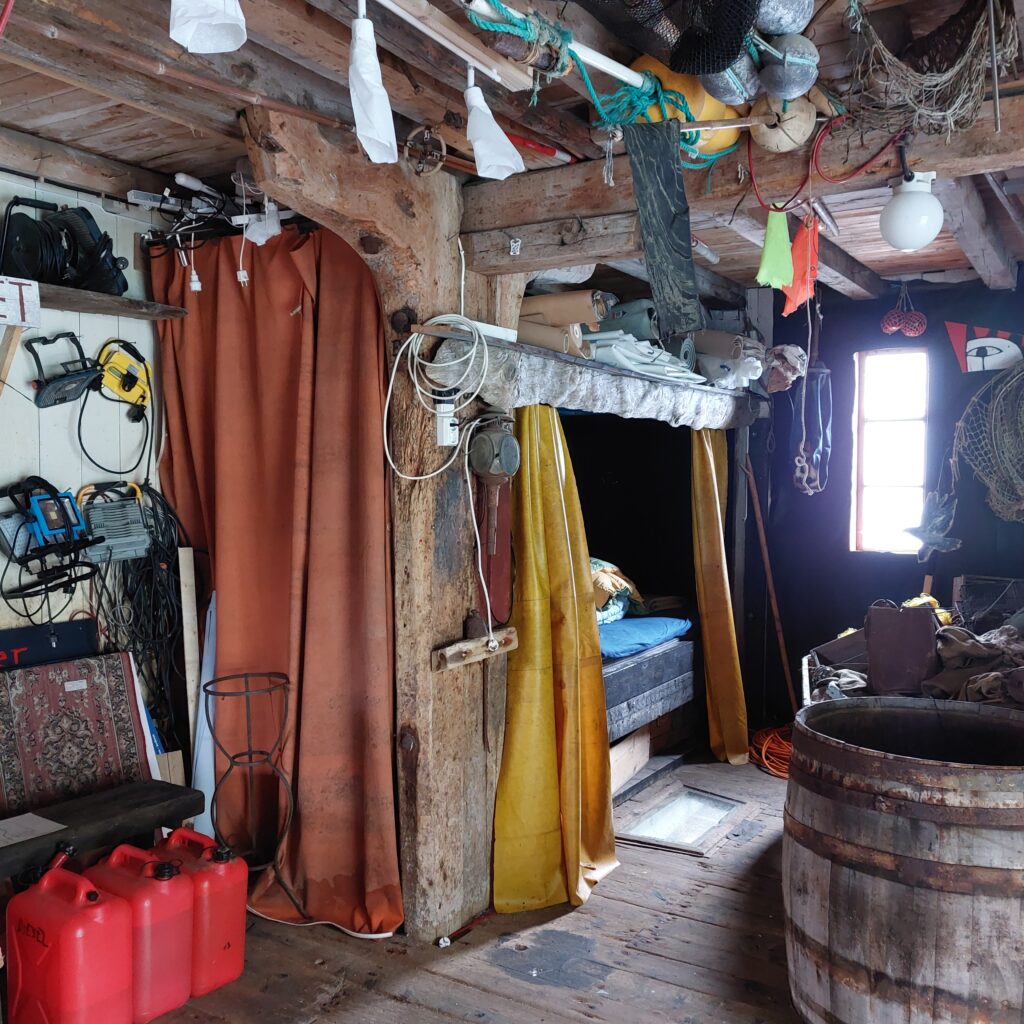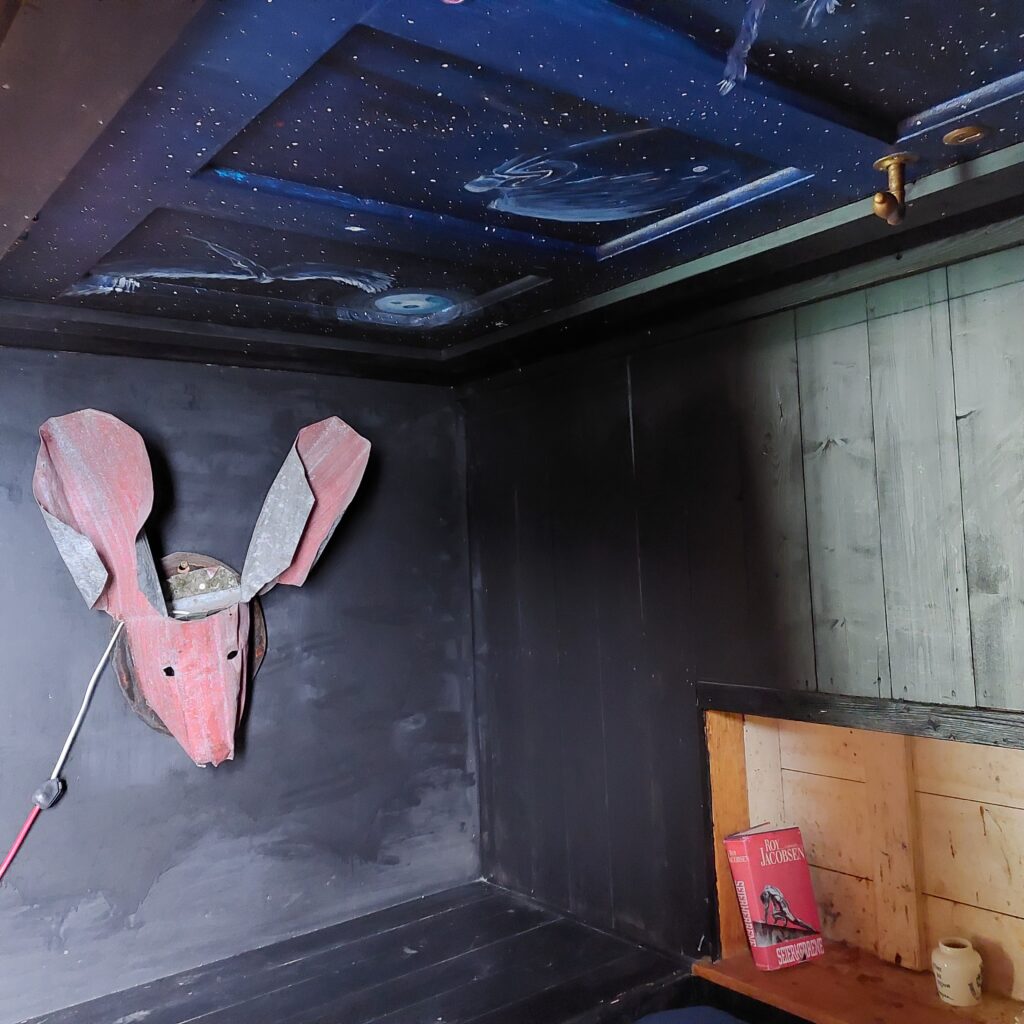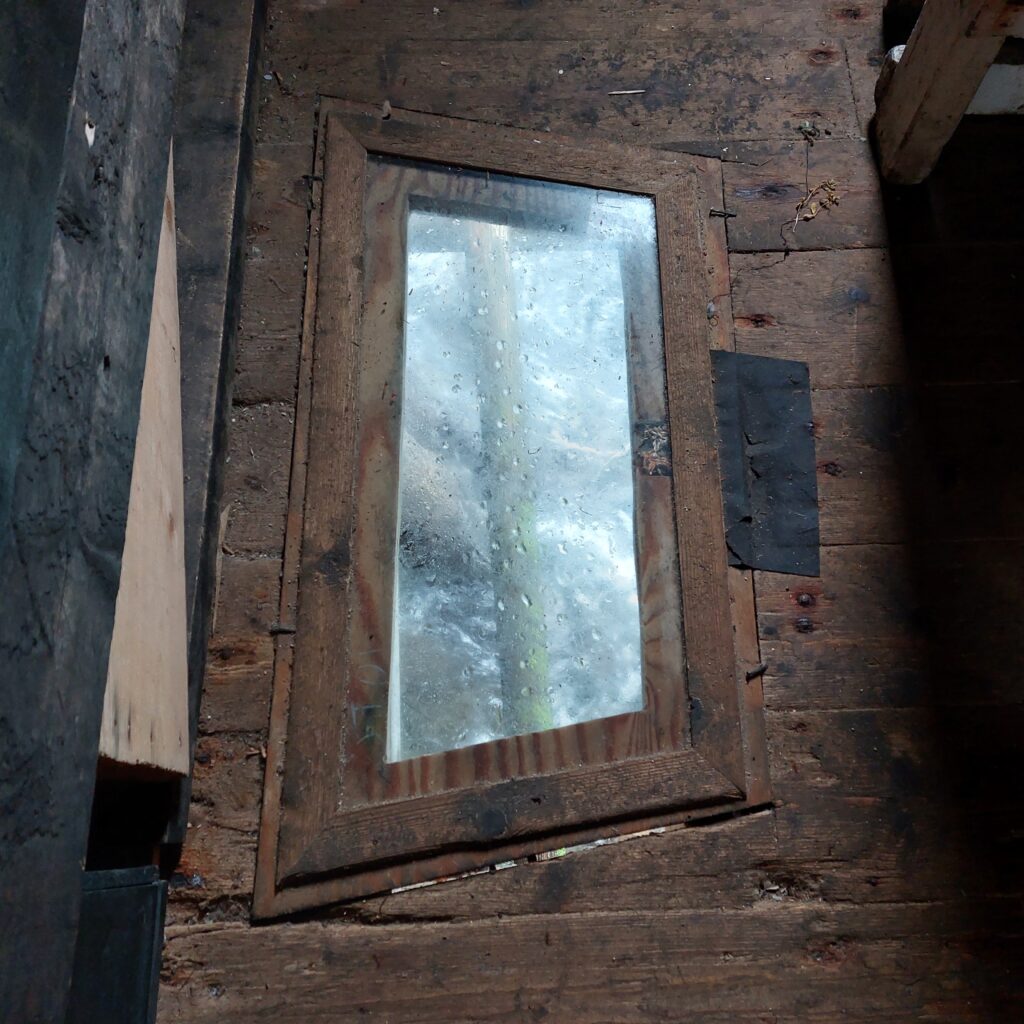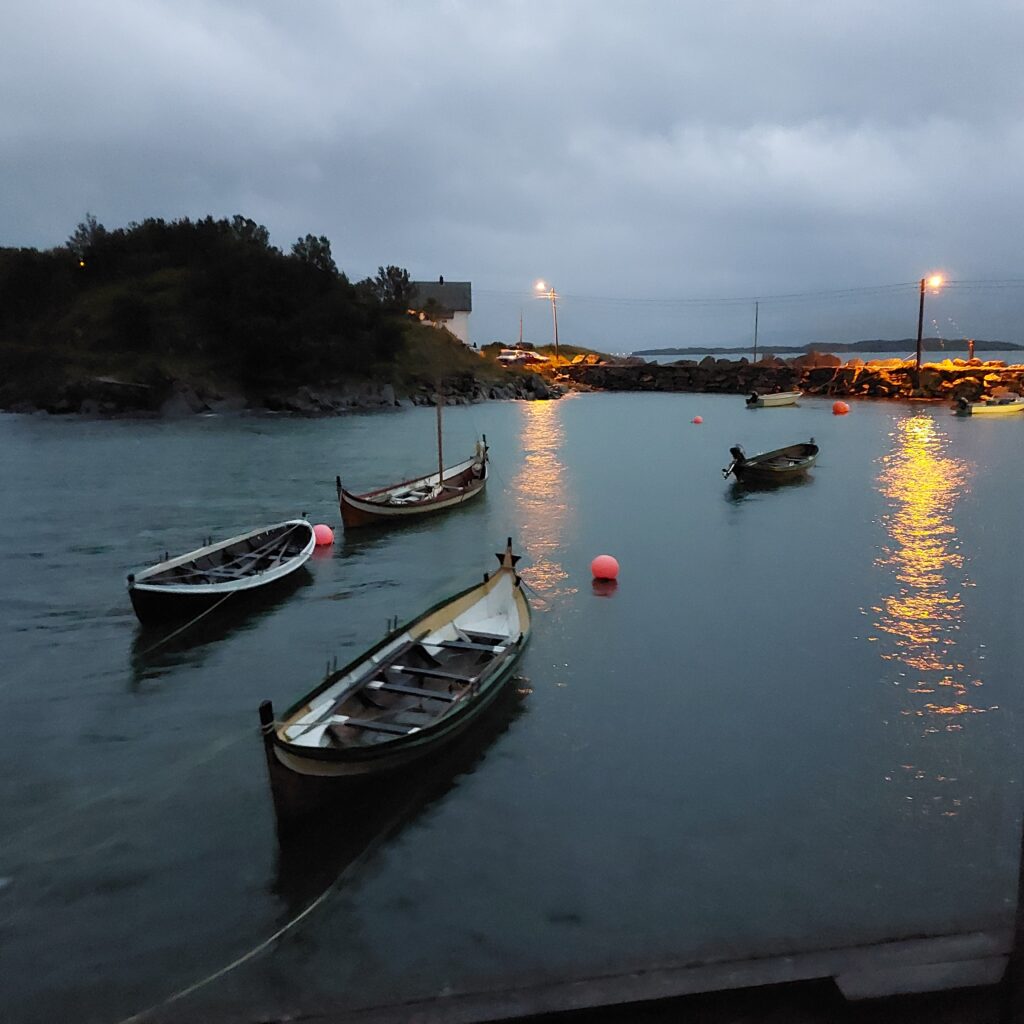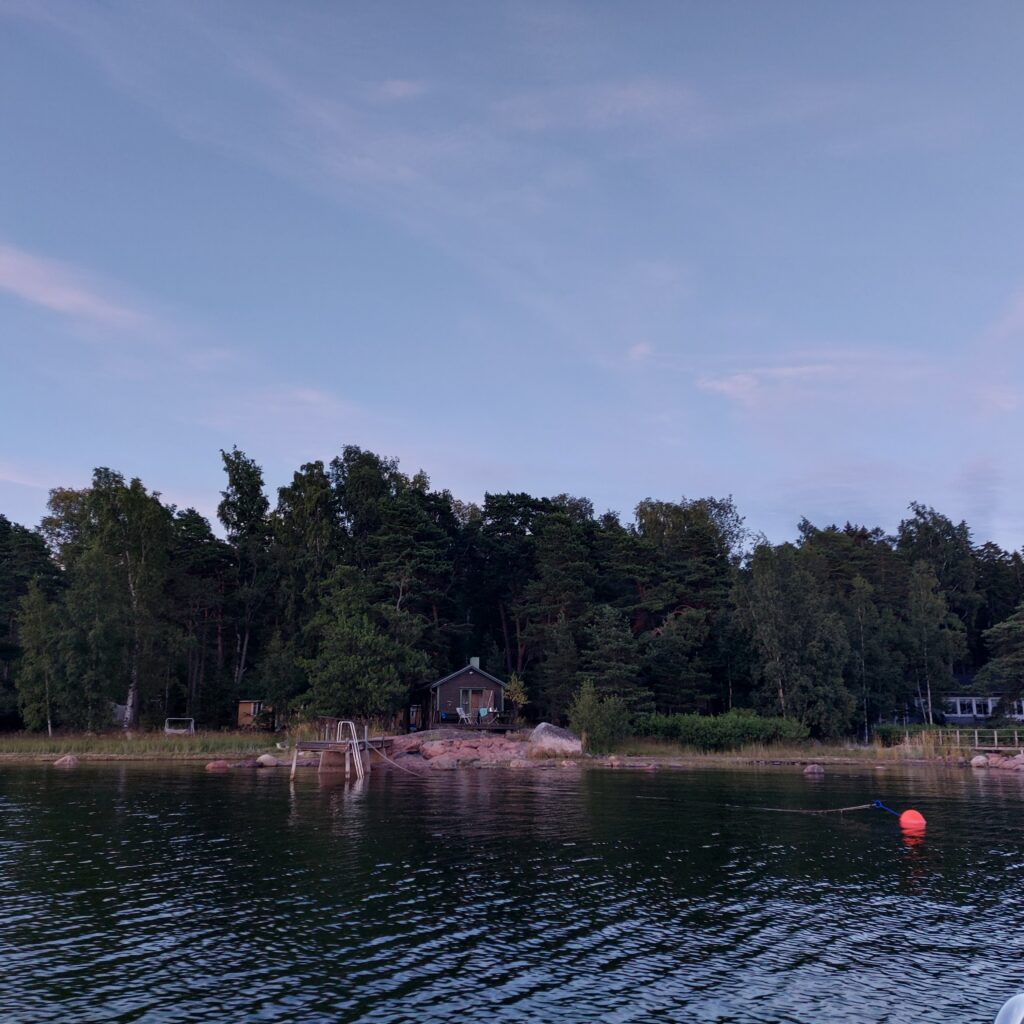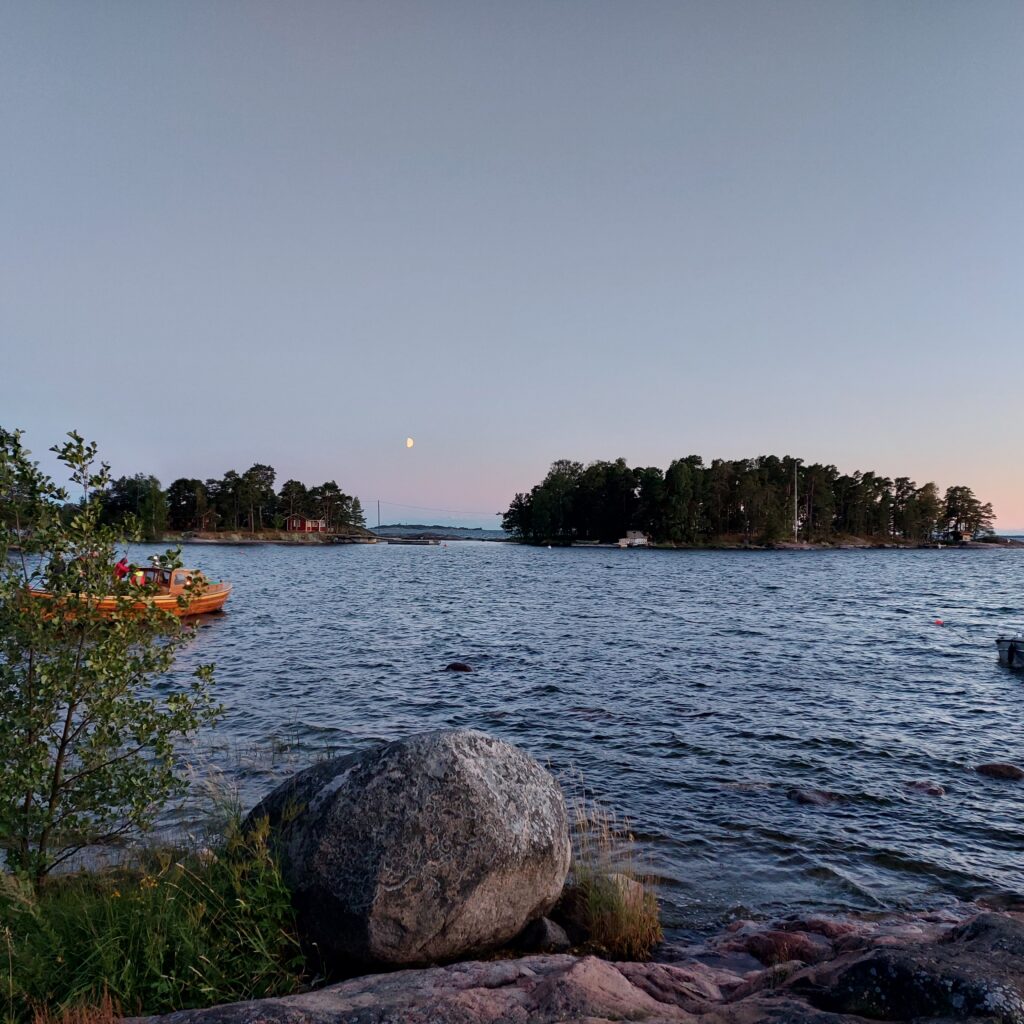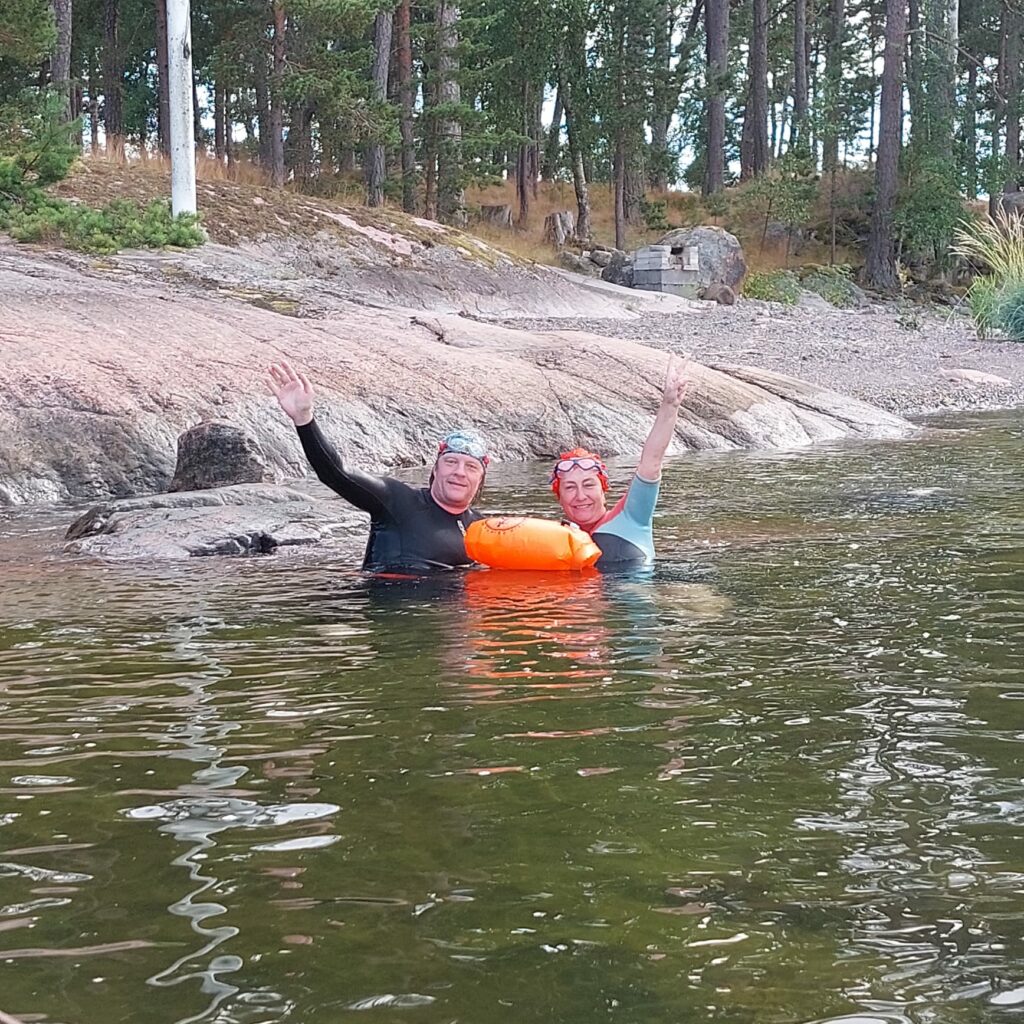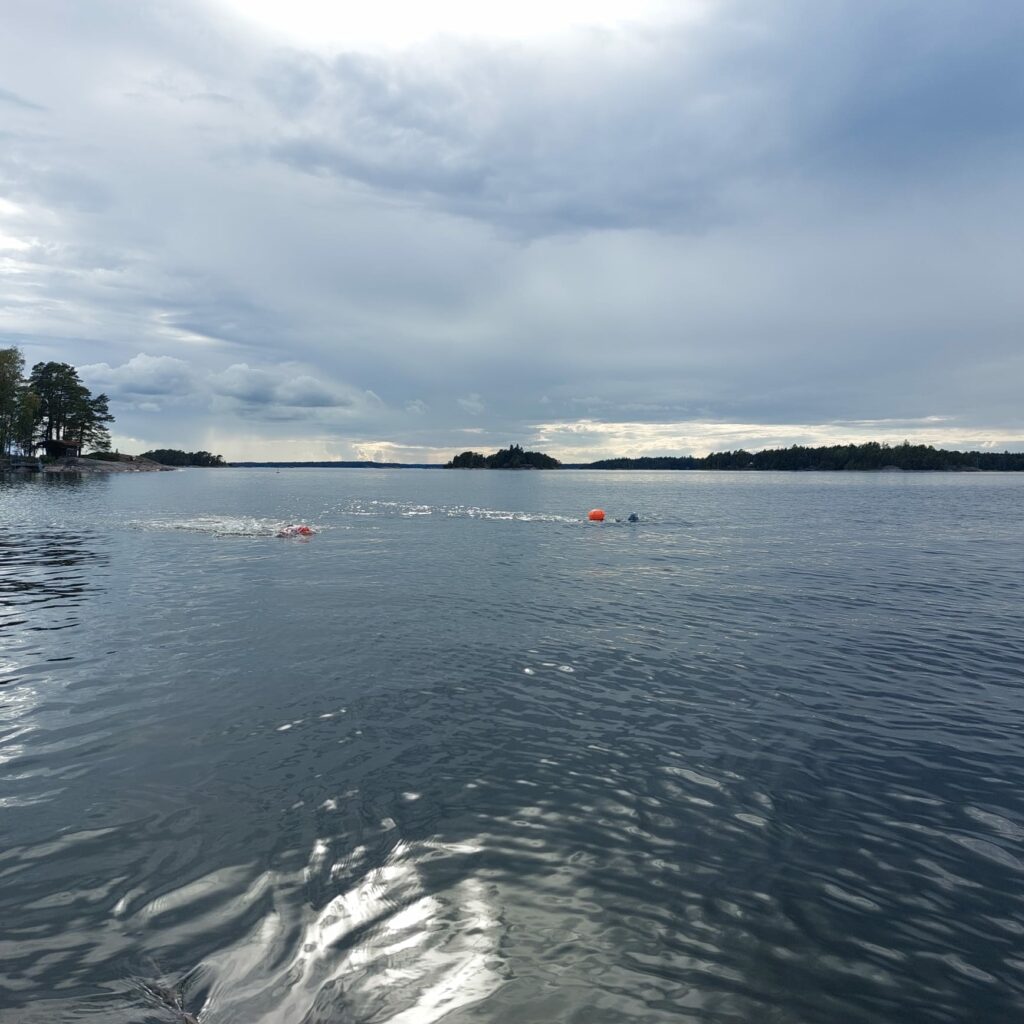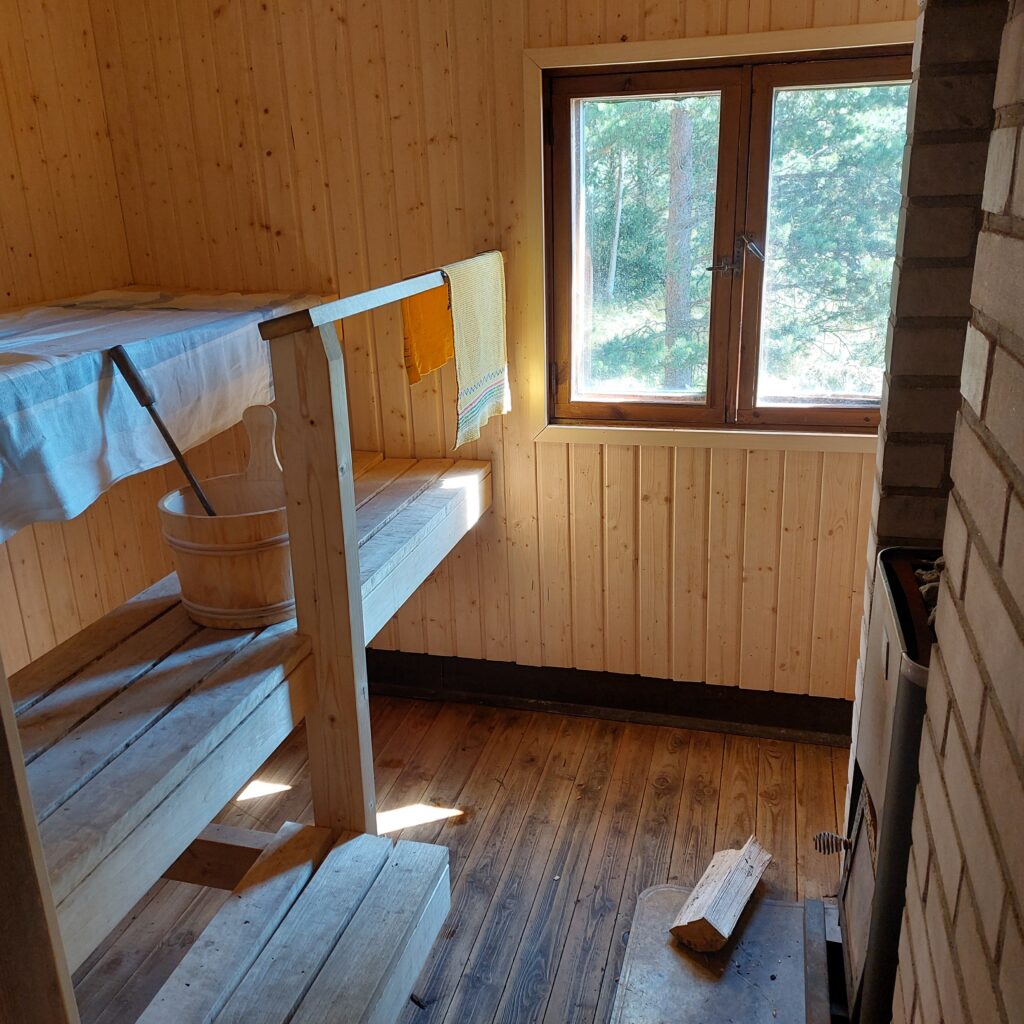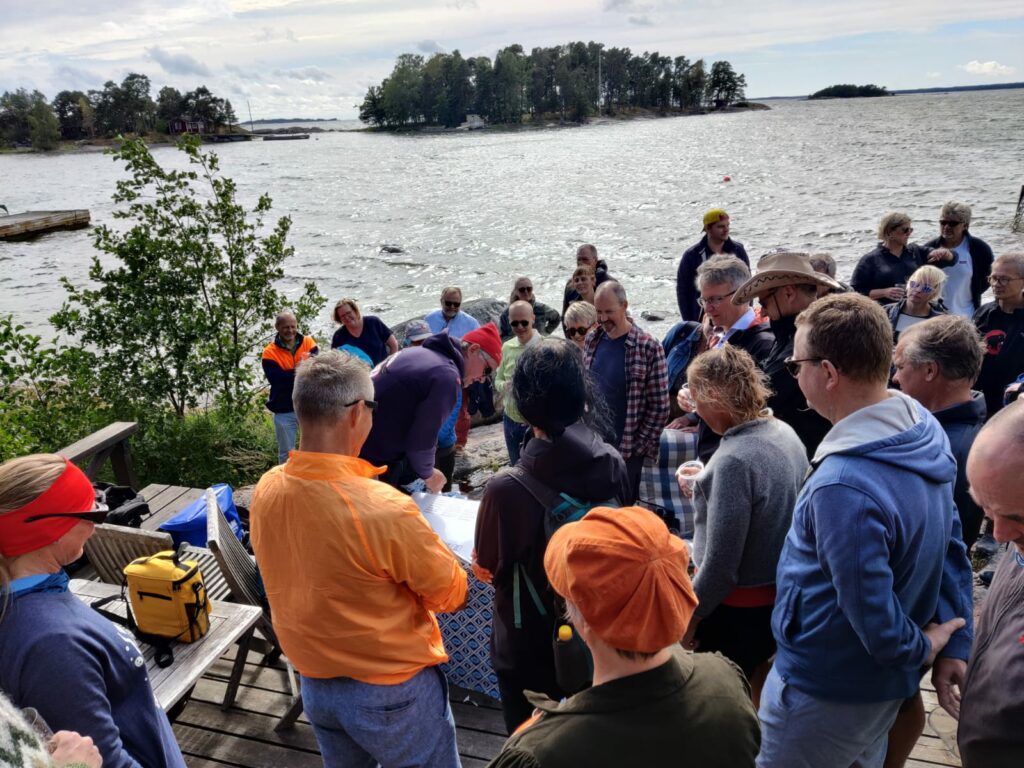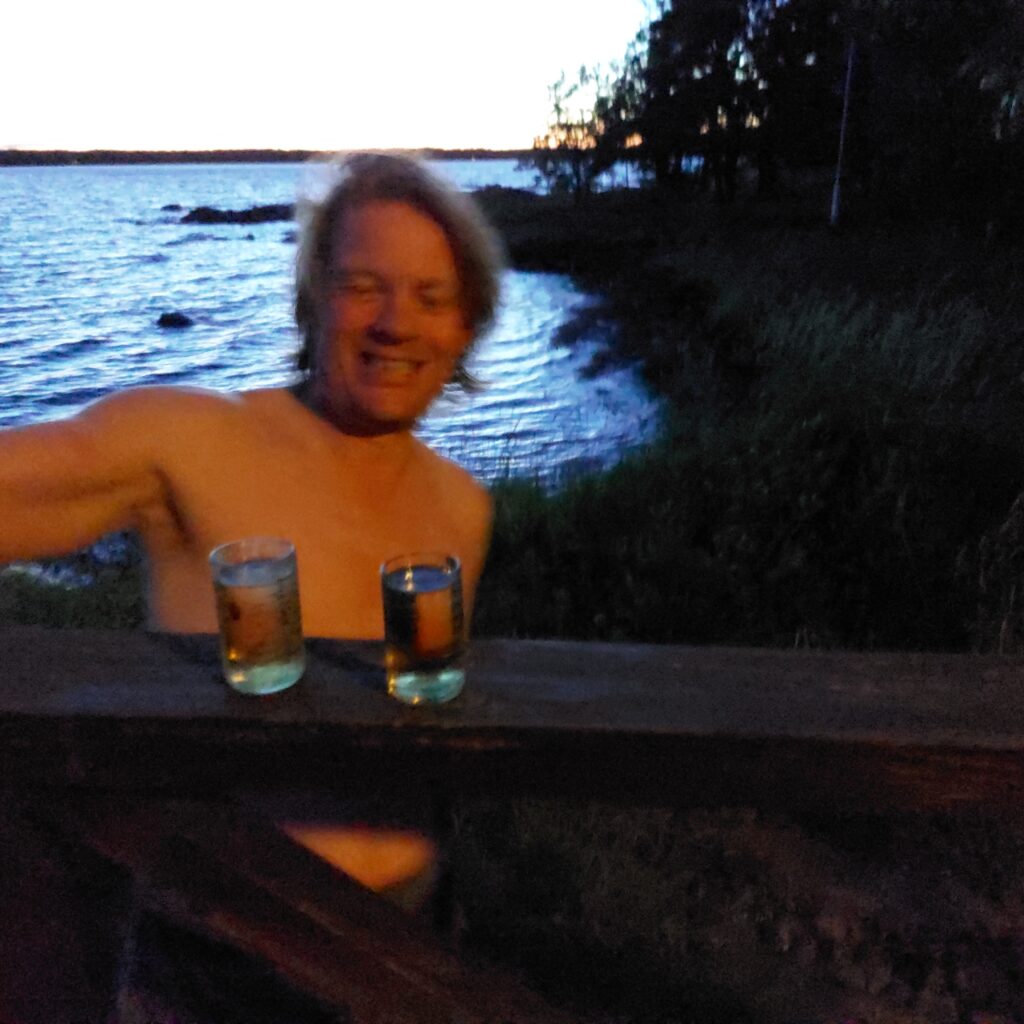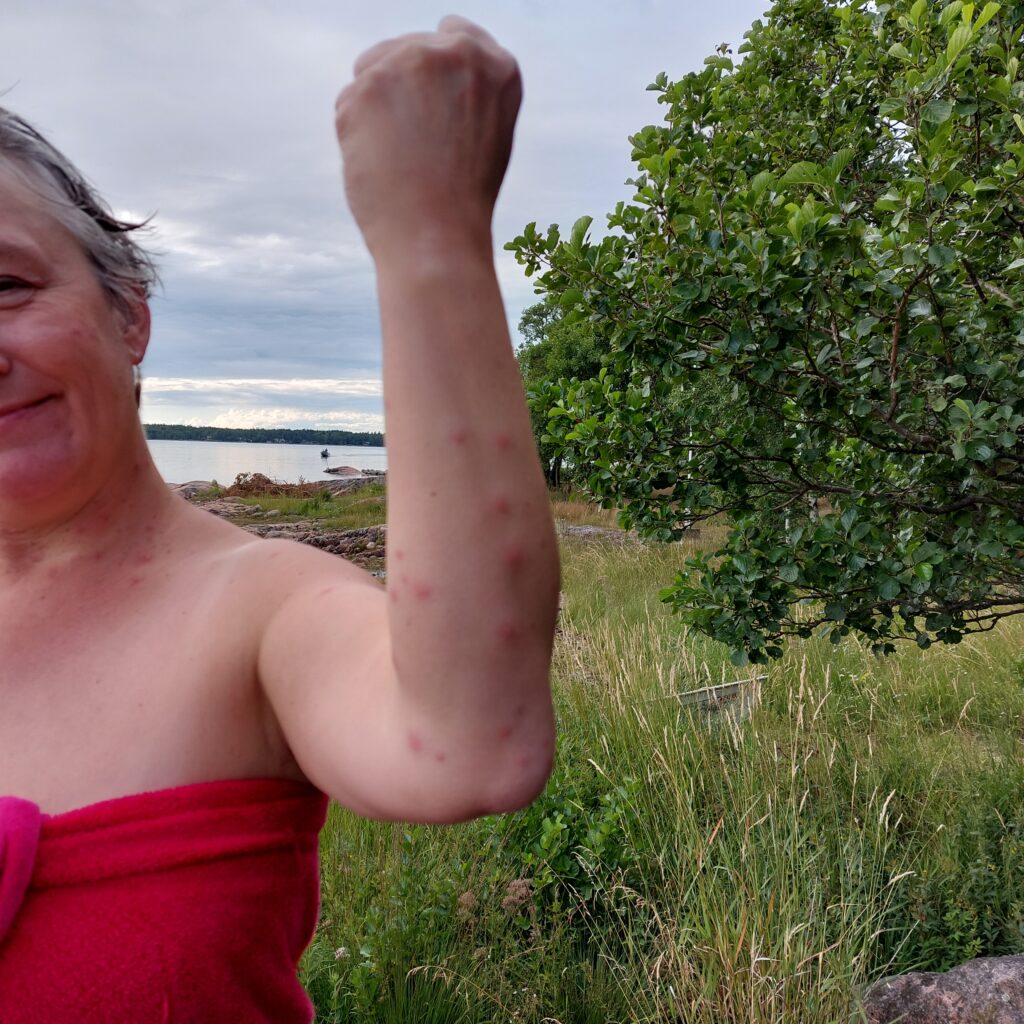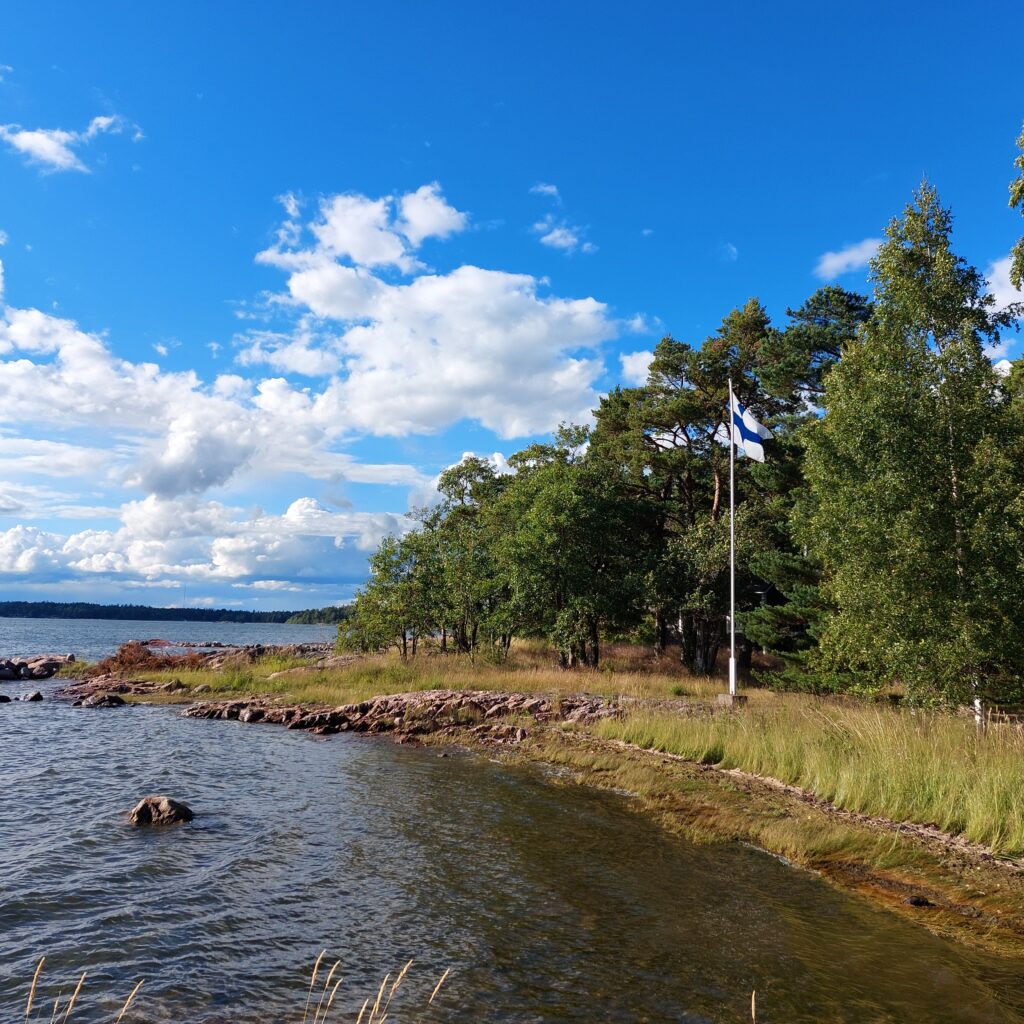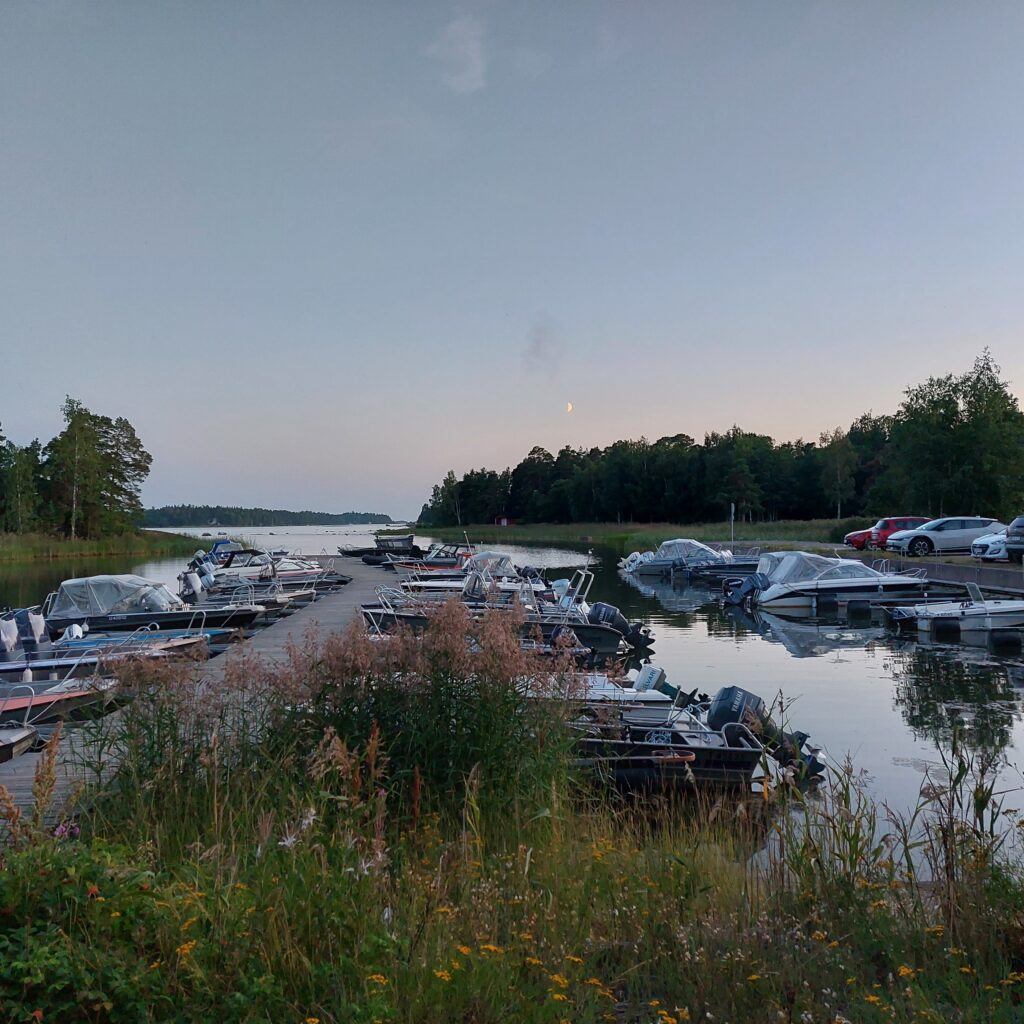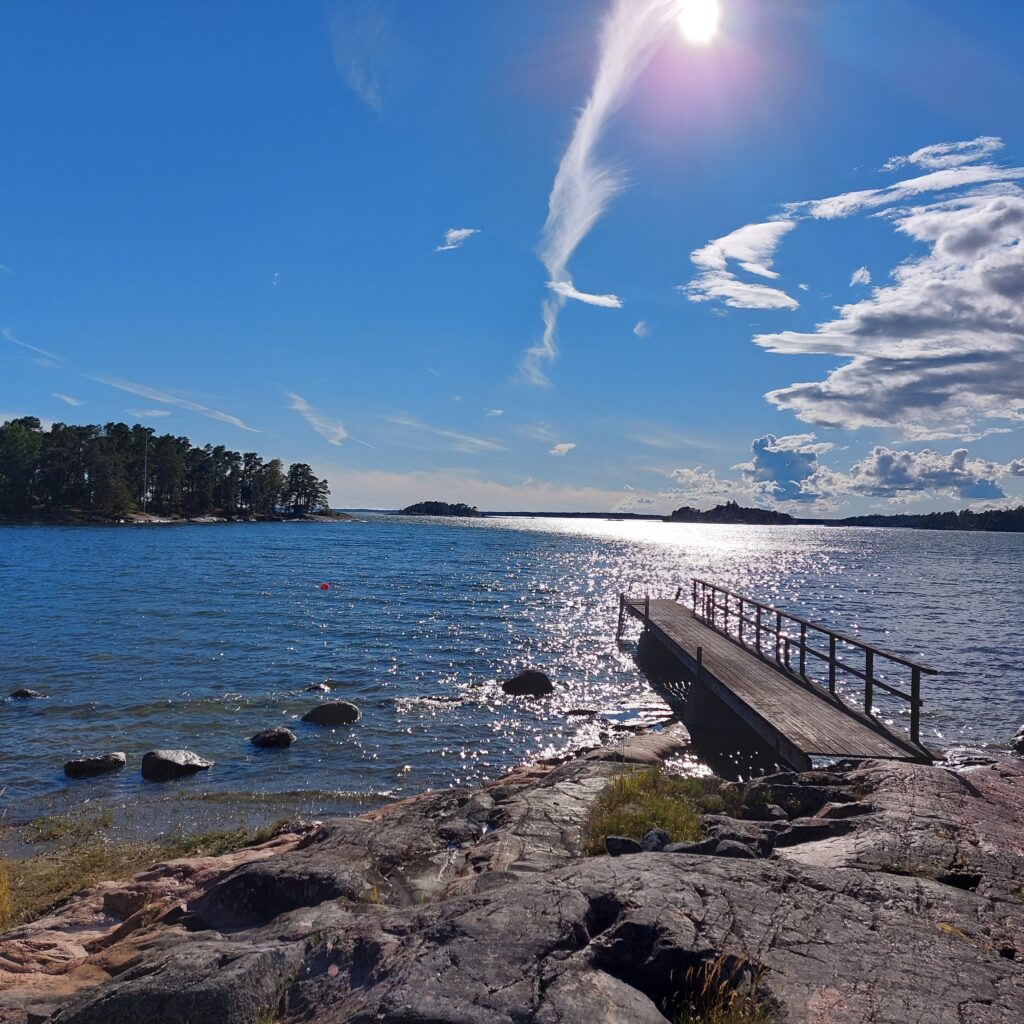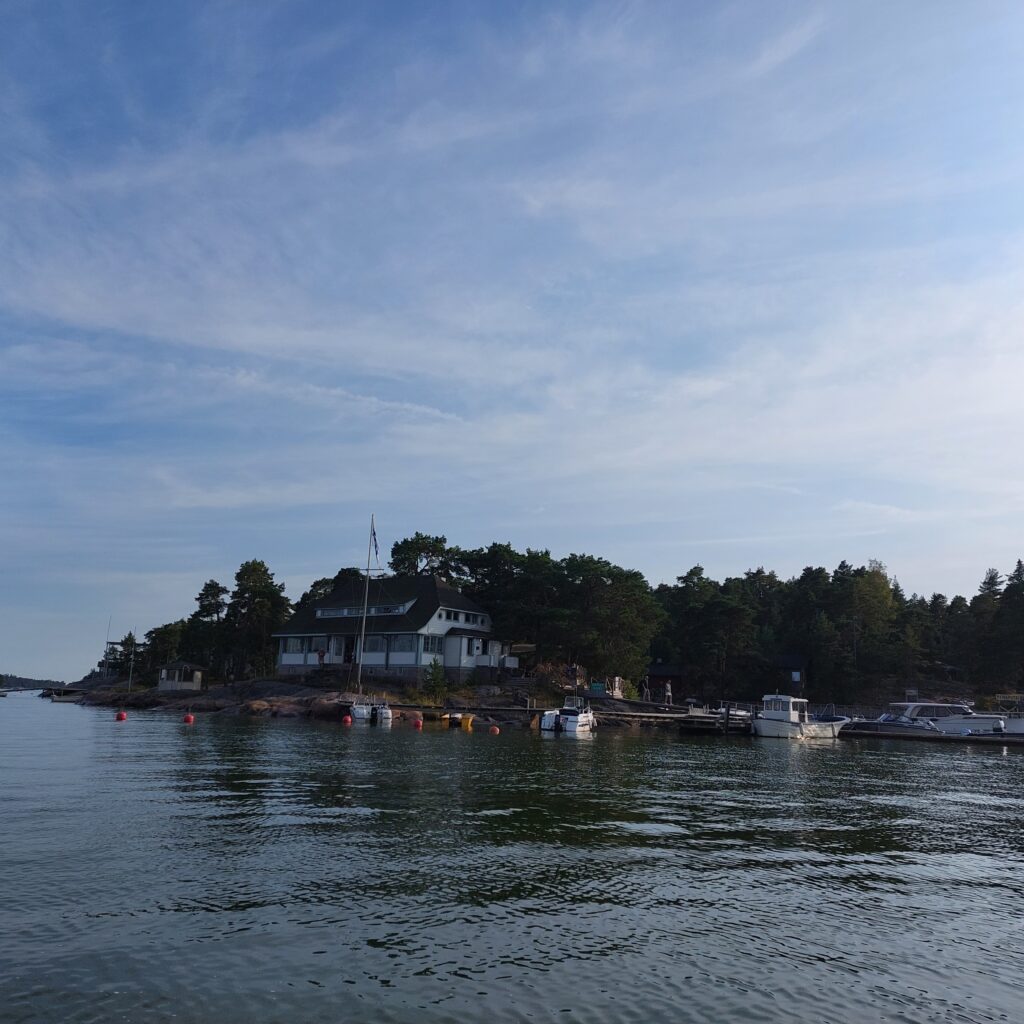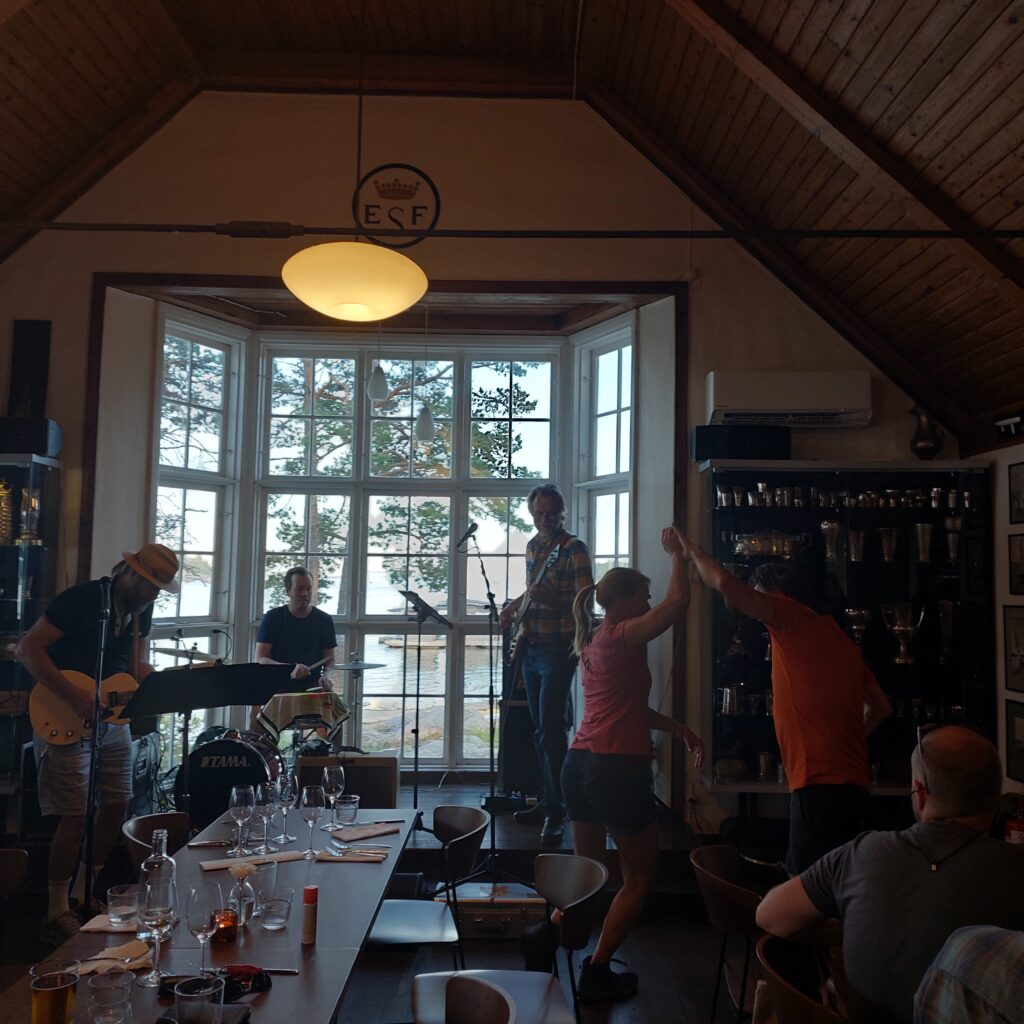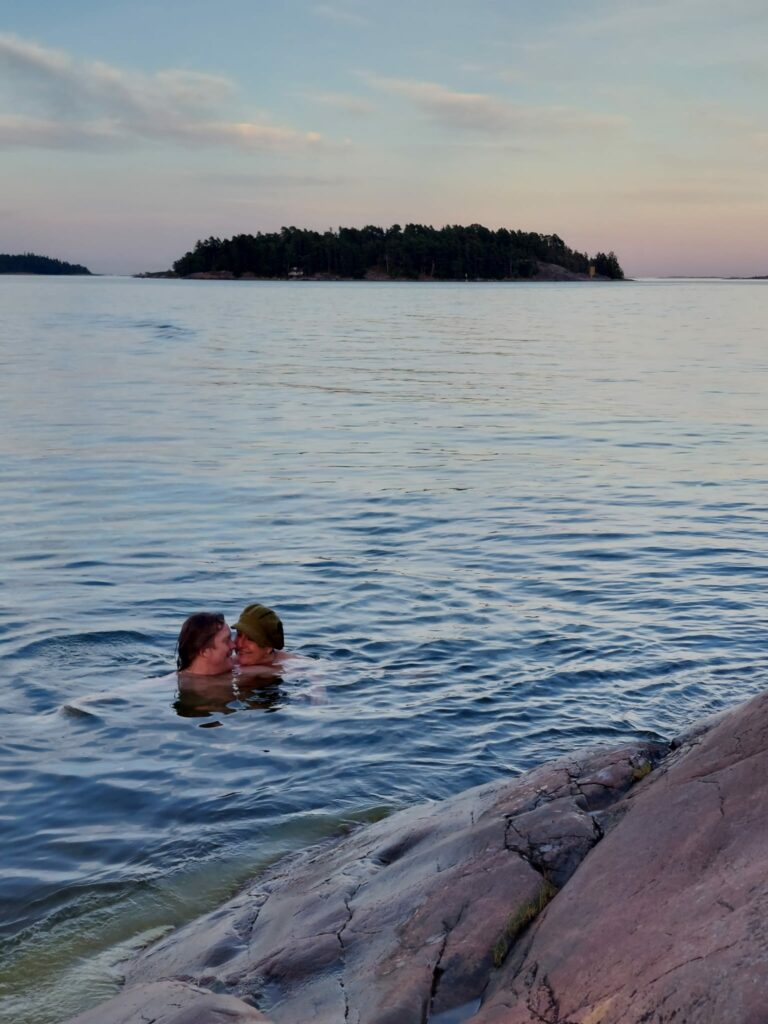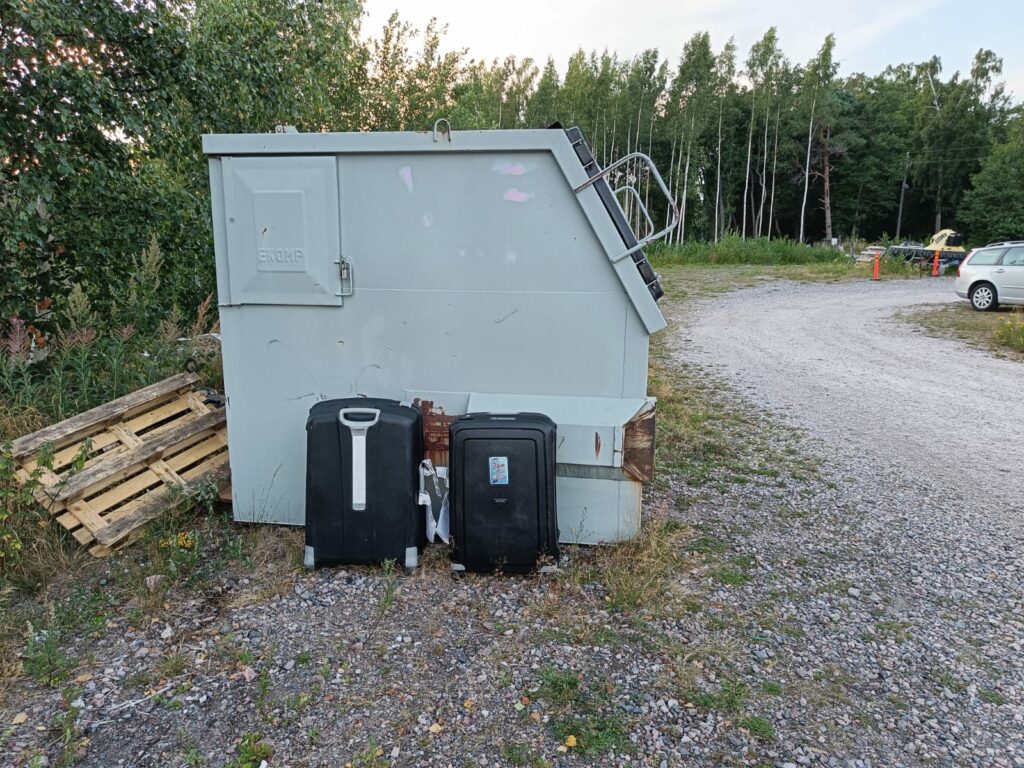Nyhavna (the new harbour) in Trondheim has for a long time been ready for urban renewal. The industry is retreating, and the municipality wants to make Nyhavna a brand new district. Here, a mixture of offices, apartments, culture and artistic arenas is planned. One of the most positive things that has happened so far in this transformation is ‘Havet’ (The Sea). Just a short cycle ride from the center you have a varied offer for sauna bathing and swimming in the Trondheimsfjord.
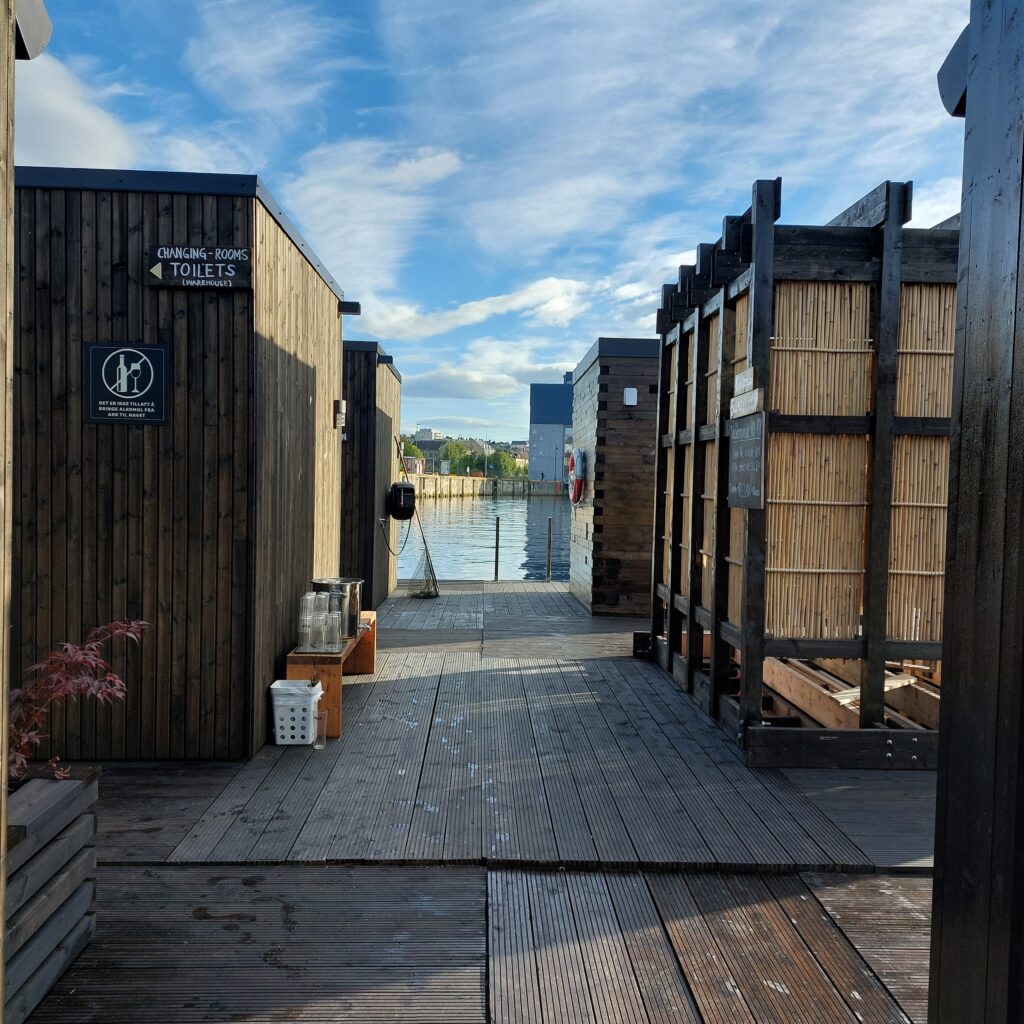
The location is such that you have a varied view:
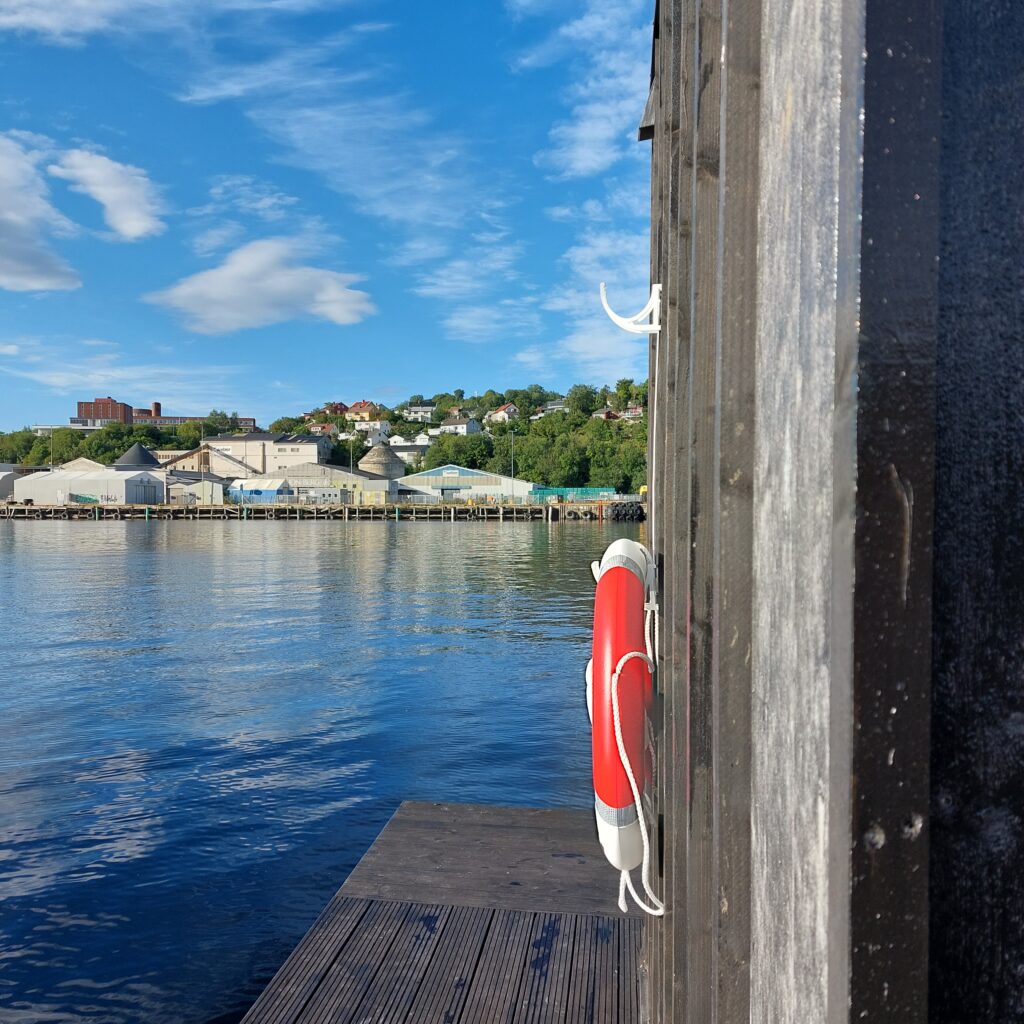
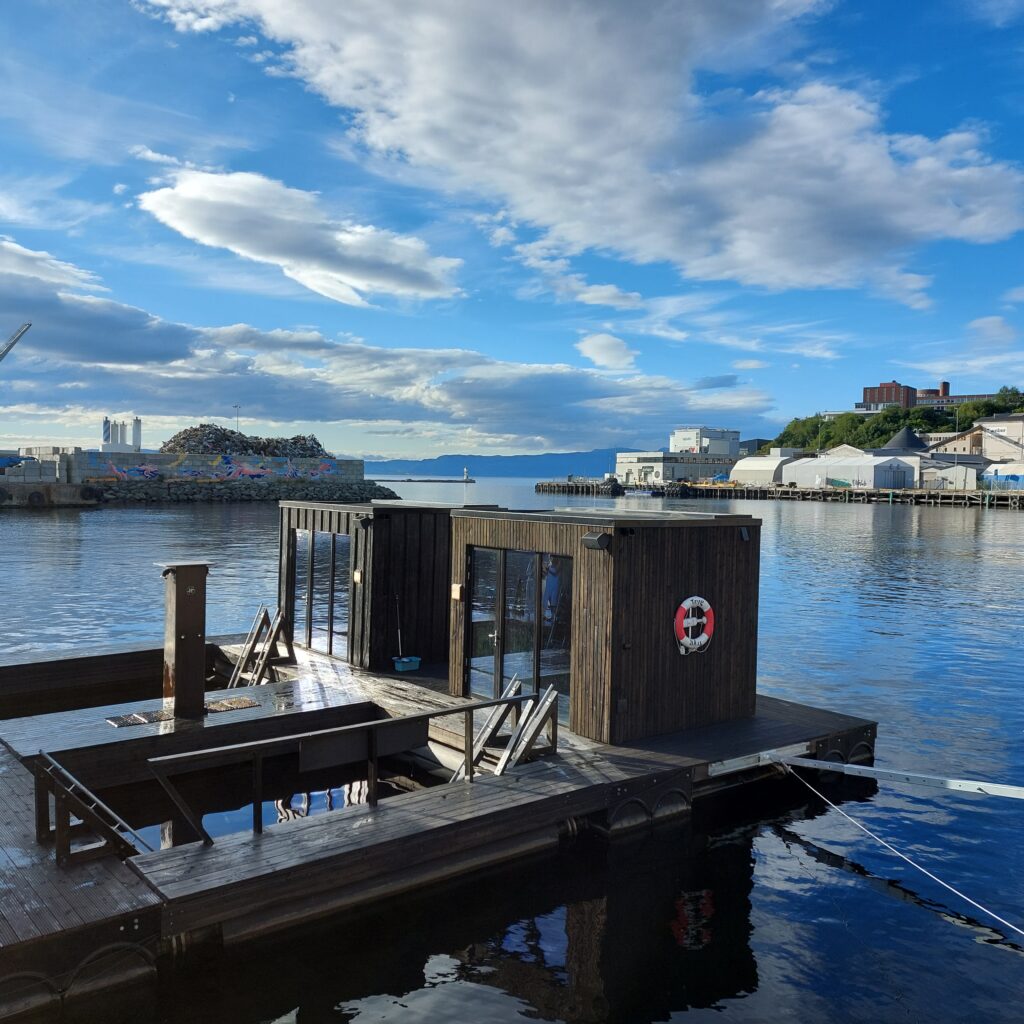
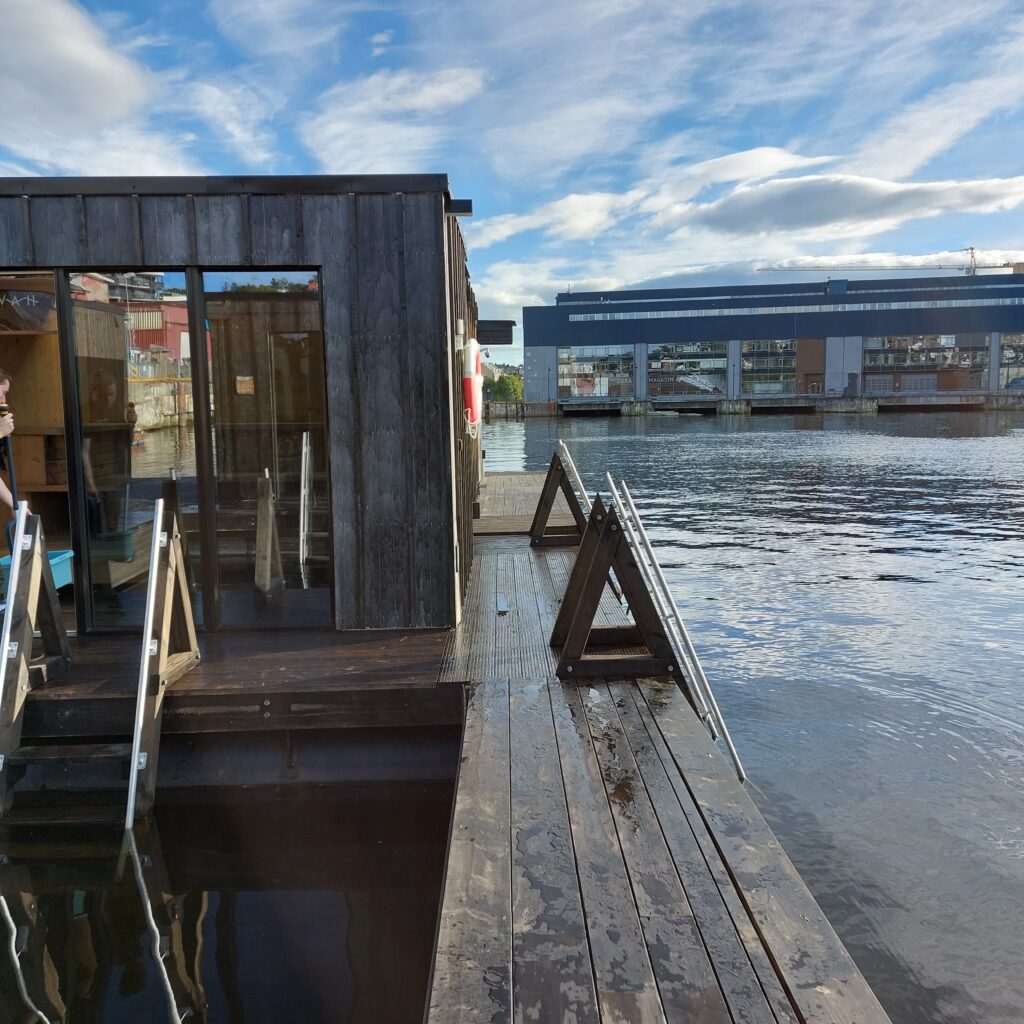
Alternatively, you can of course be the view yourself:

Photo: Kjerstin Moseid Bryhni
At Havet, you can book single hours or whole saunas for 2 hours. Try it! This is splendid! The furnishings (benches) are spread out in different levels and odd angles, you don’t have to sit in a row if you don’t want to.
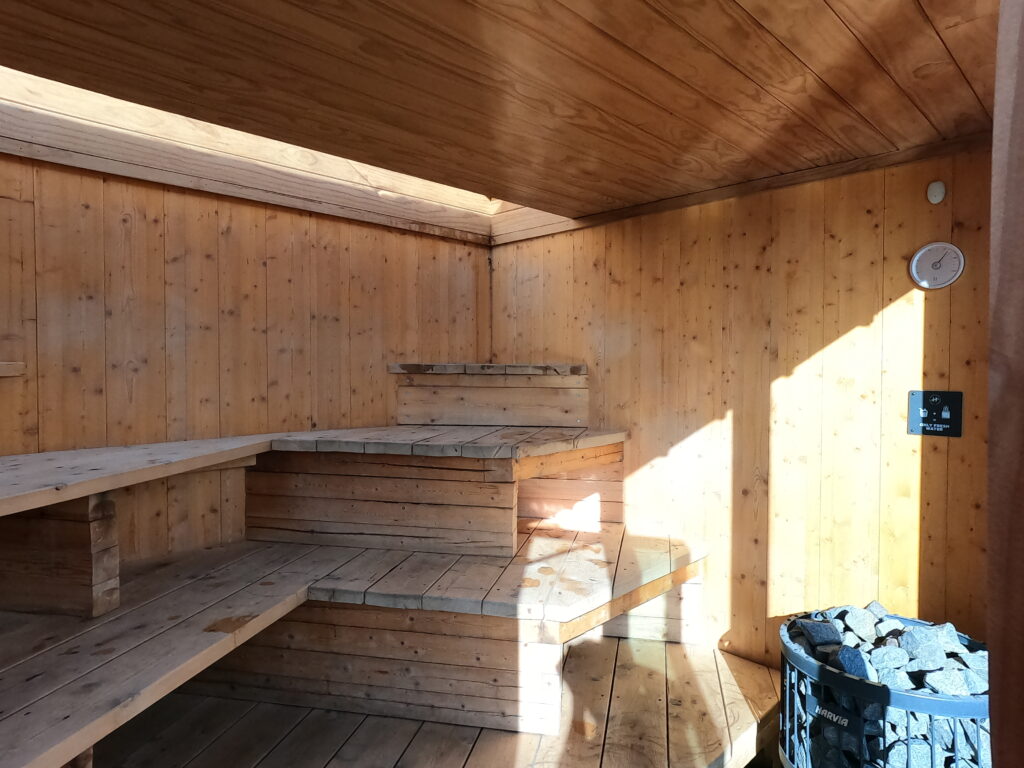
Cold baths are carried out in the openings between the saunas.
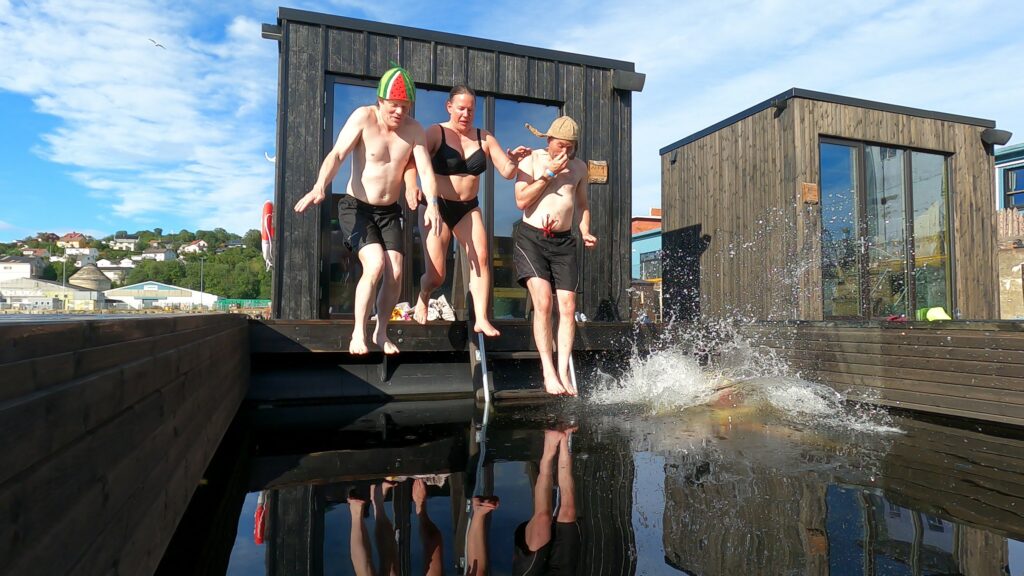
Some of us where missing some steps up to the roof, to be able to jump from there, as we have seen on other floating saunas.
A couple of hundred meters away, the municipality has built a diving tower in collaboration with Havet. There you can jump and swim for free. But it is just a little too far from the saunas to function as a common facility.
During ‘Kulturnatt Trondheim’ (Cultural Evening Trondheim) in 2017, there was a competition ‘What is your dream for Nyhavna?’ Our bathing friend Taru won, with the answer: Sauna. But she won by a lottery draw, the idea in itself was considered undoable both by the municipality and the consult bureau arranging the contest. But now they are here, a lot of saunas!
Thank you so much, Taru, for an absolutely brilliant idea! For once, it happened in Trondheim that all this came into place quite suddenly, without a long-term localization debate and a lot of back and forth.
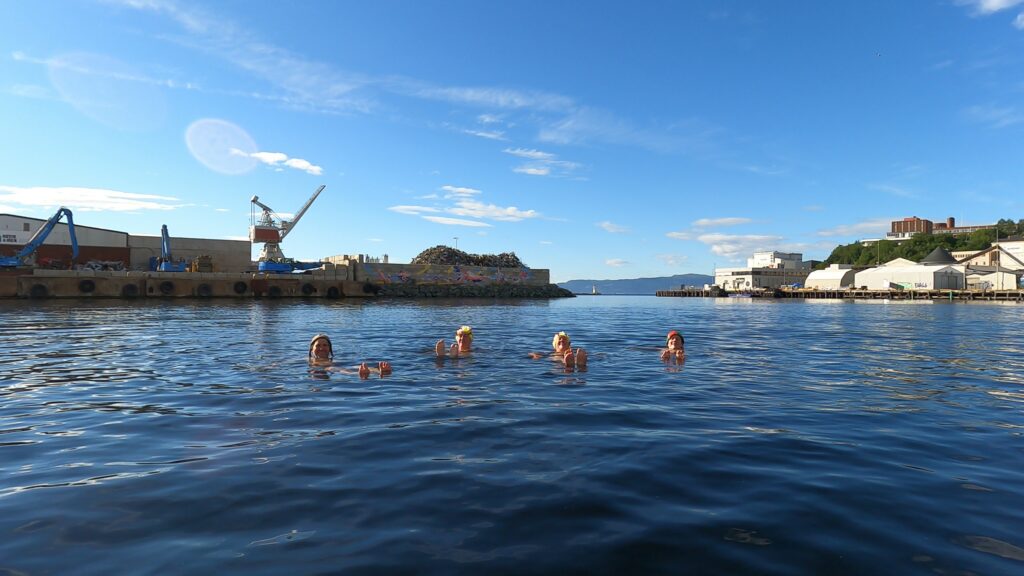
Our sauna had a ceiling partly made of glass. Imagine sitting here and enjoying the stars in the sky and maybe the aurora borealis in winter time?
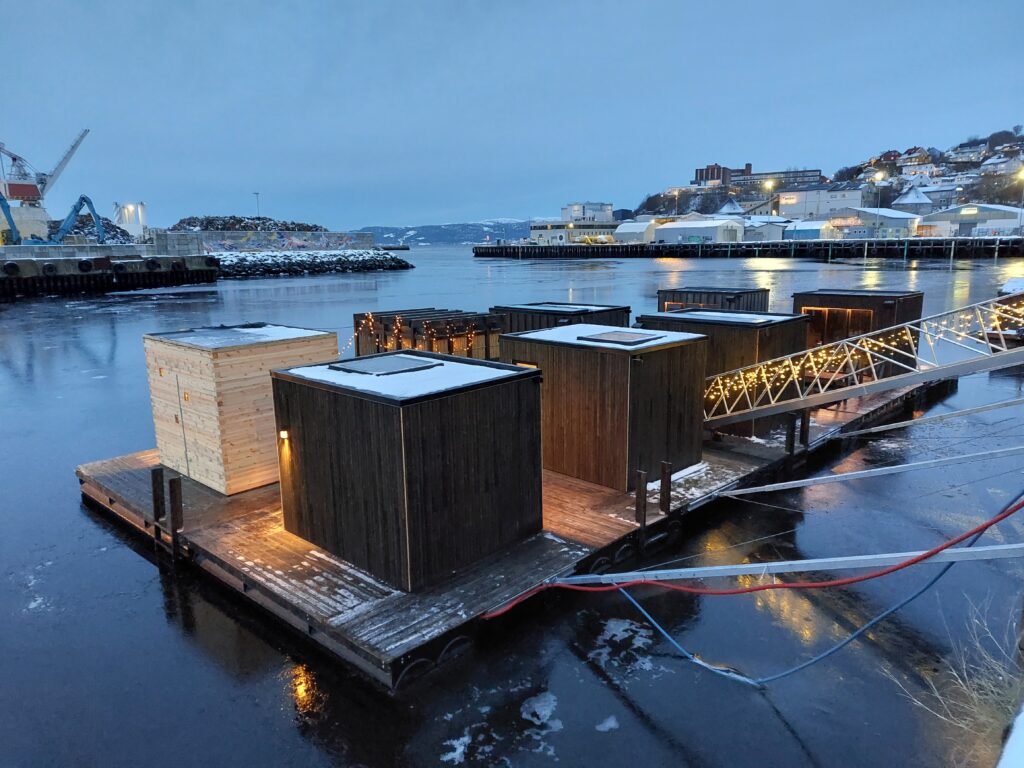
In not too long time, the sauna concert concept at Havet will probably start up again, and then you can experience a sauna and a concert – at the same time! However, we had do to the concert part another place and ended the evening at Ladekaia, watching Vømmøl.
